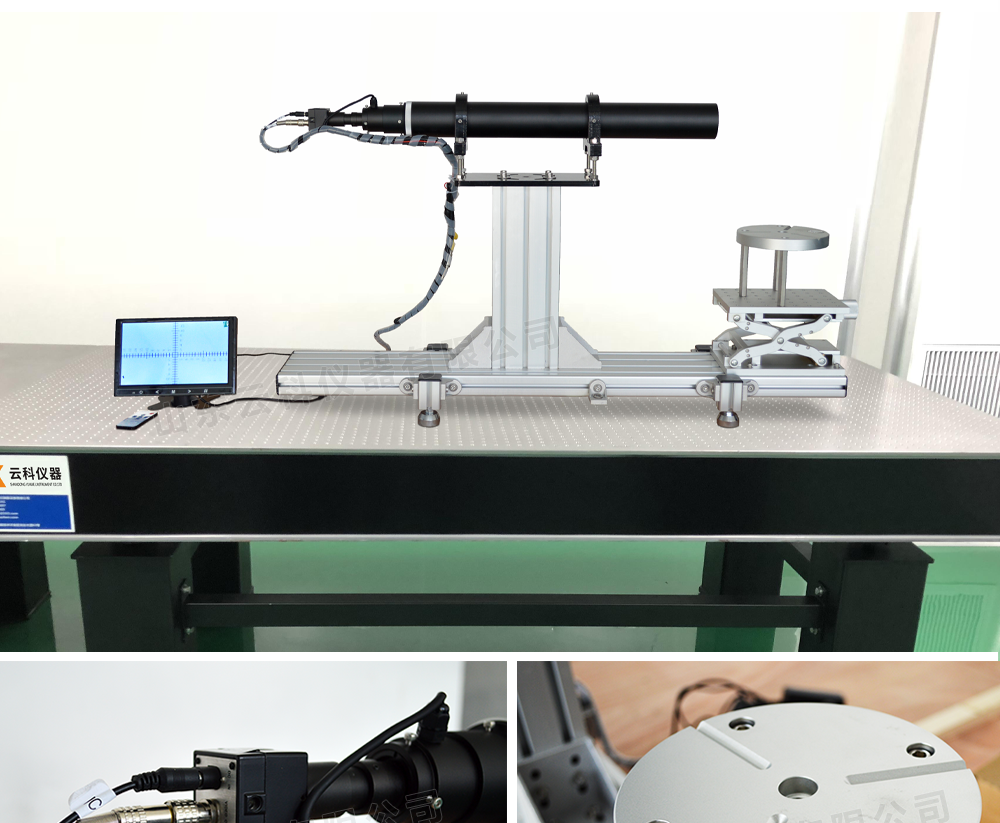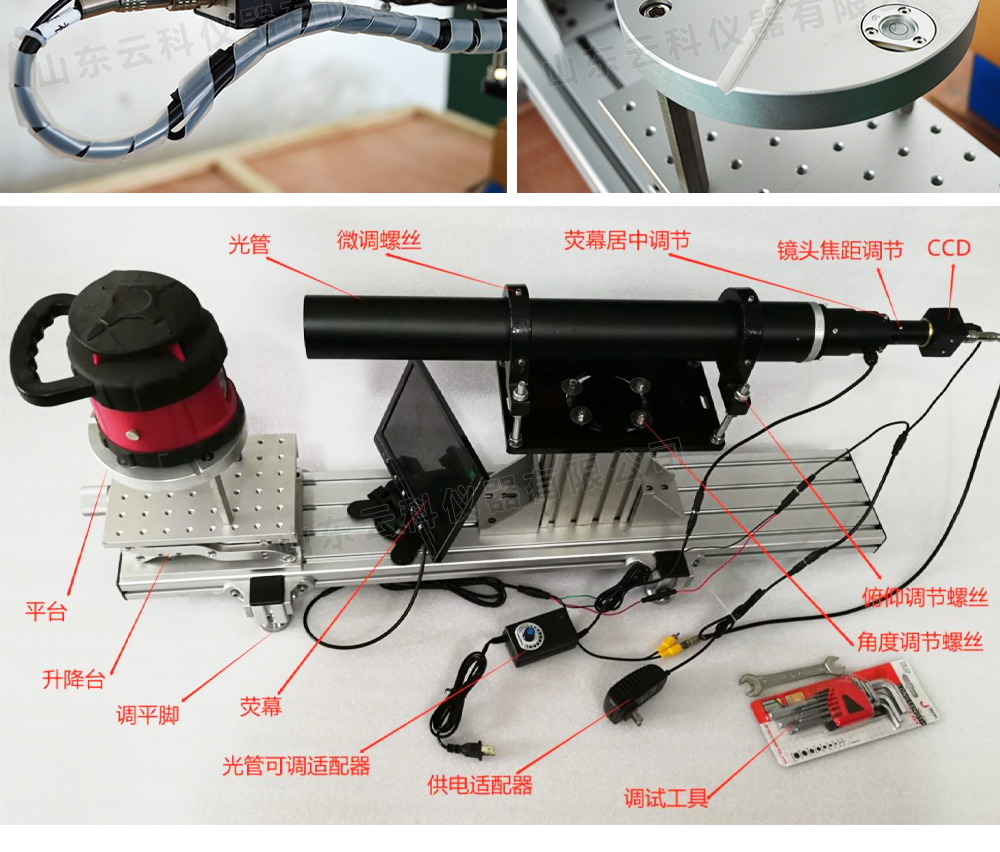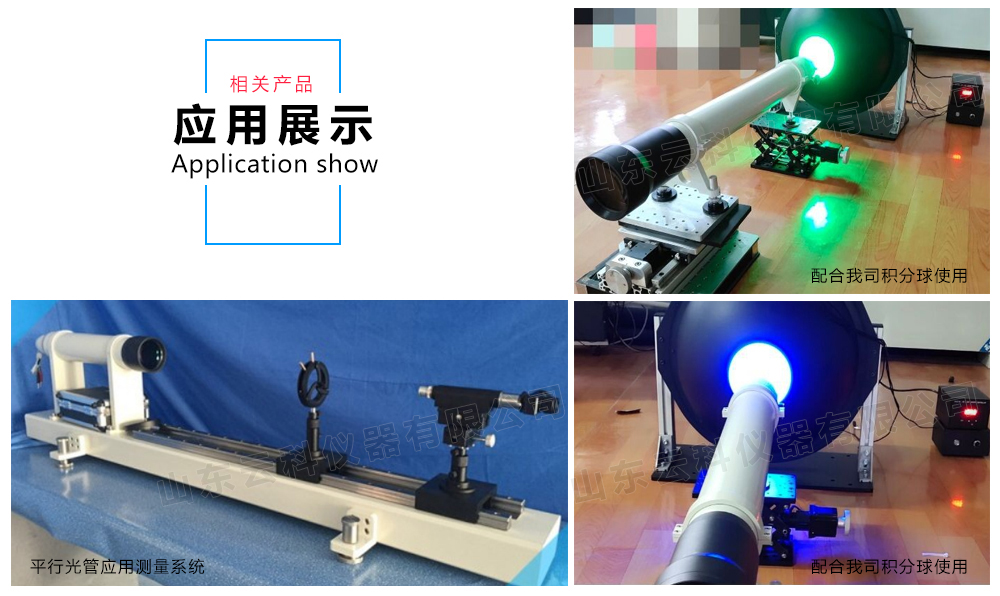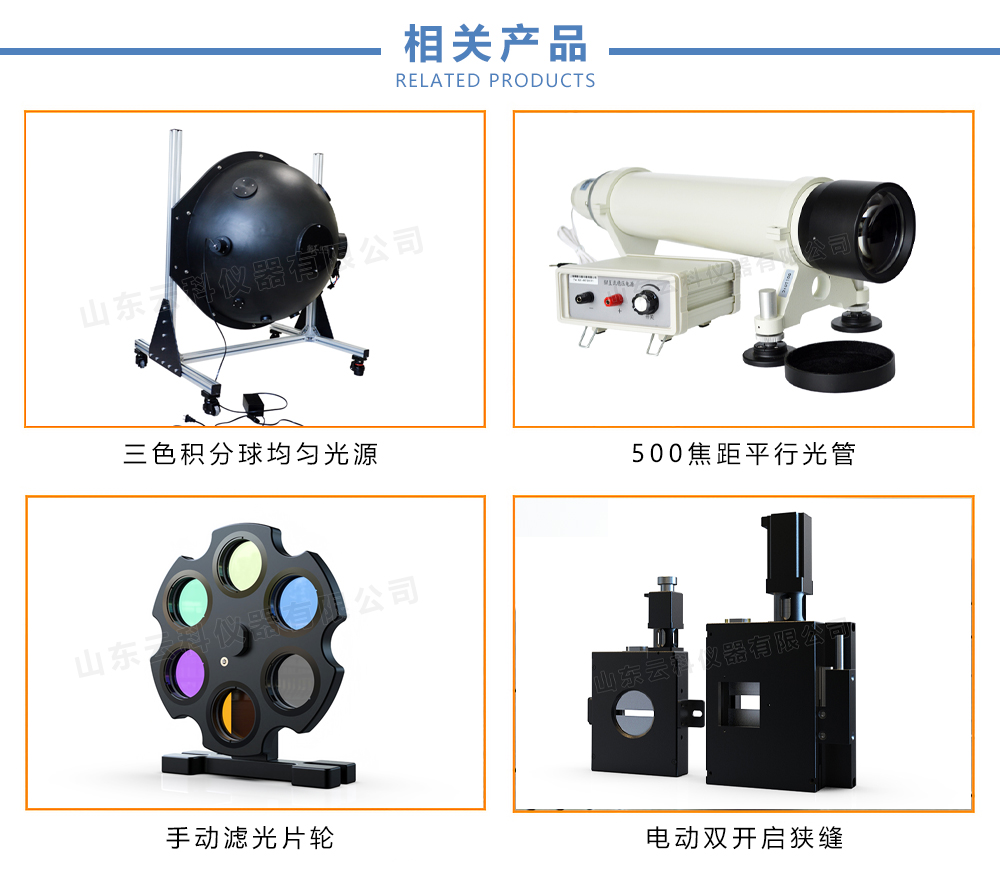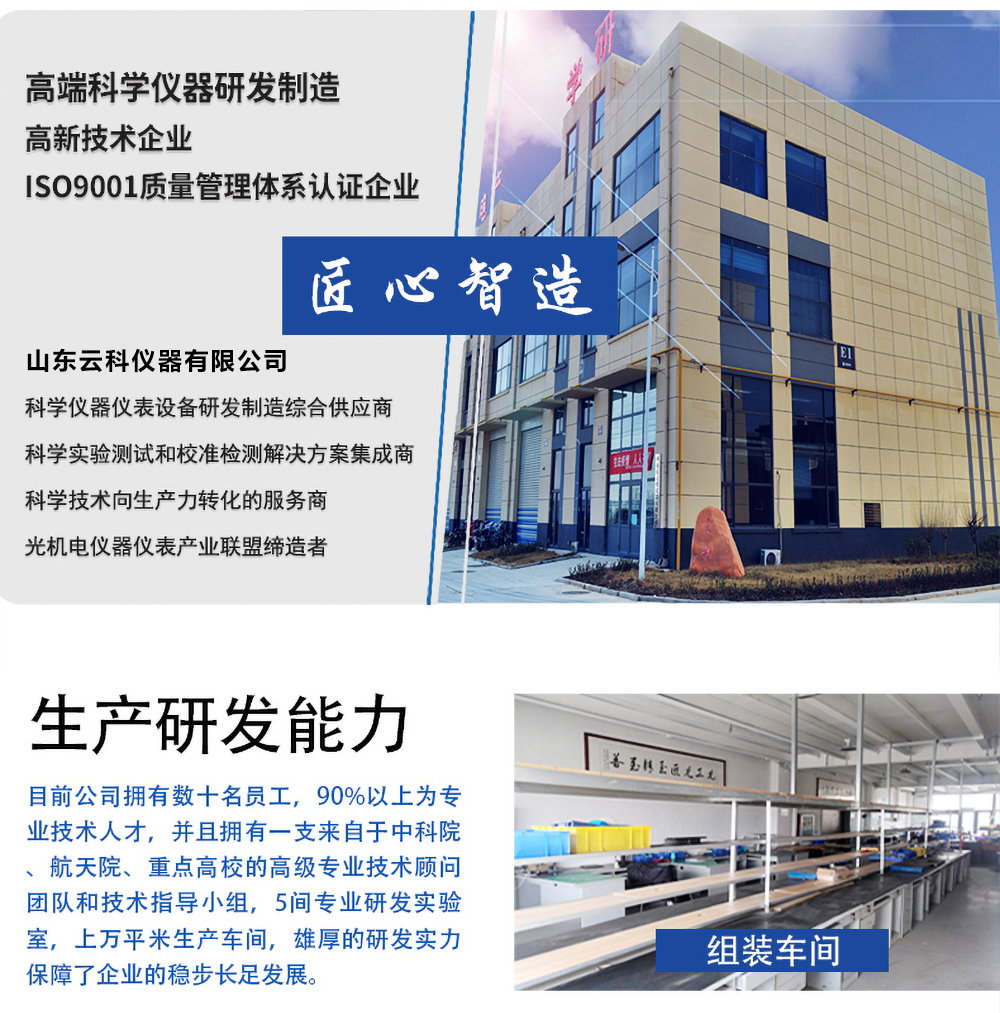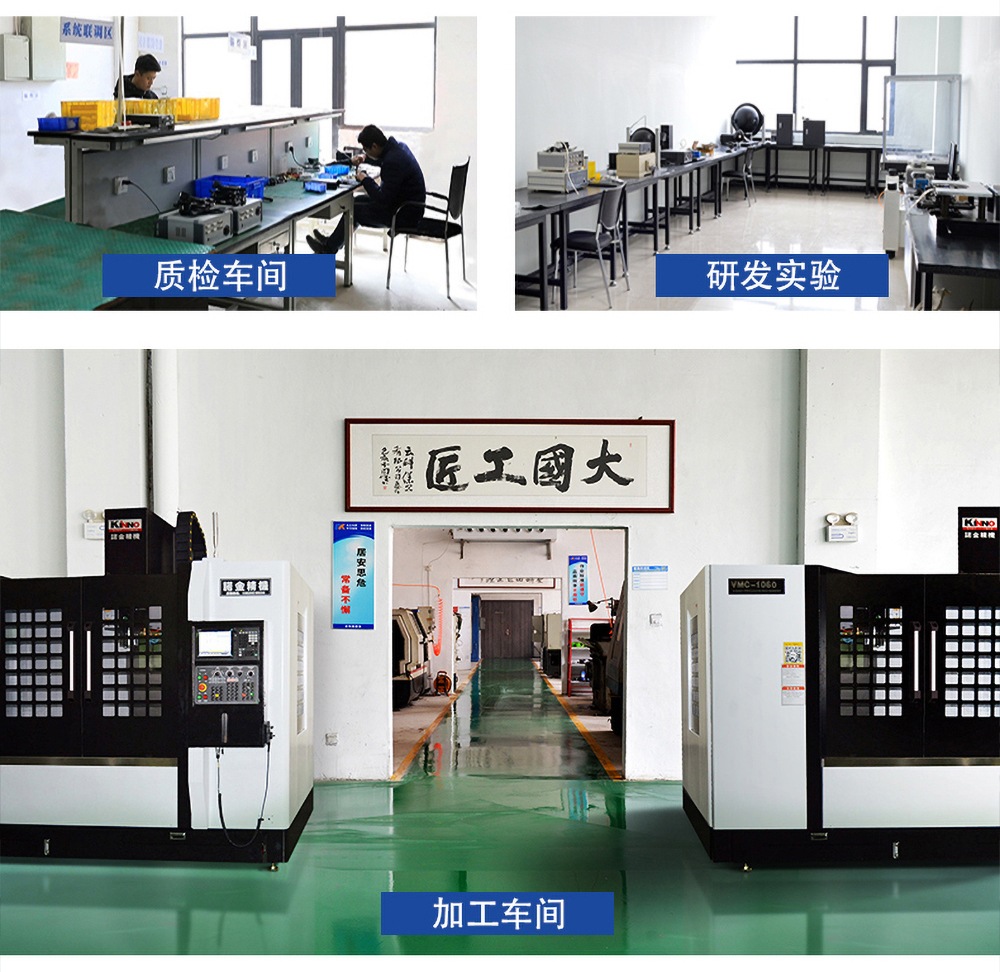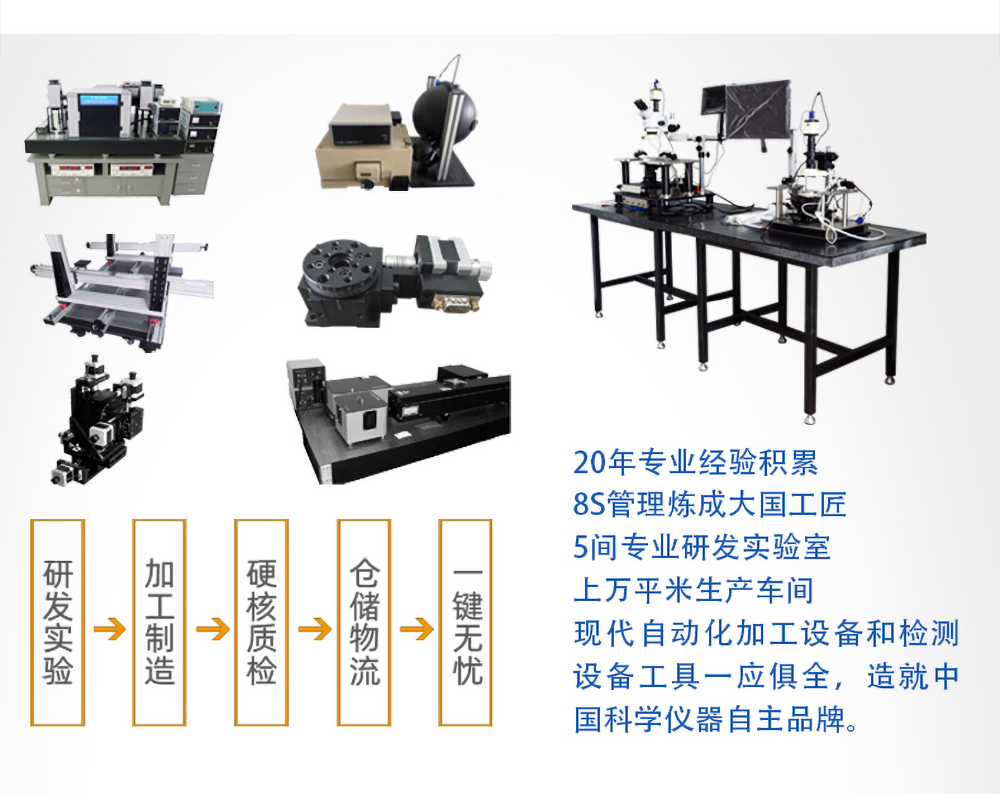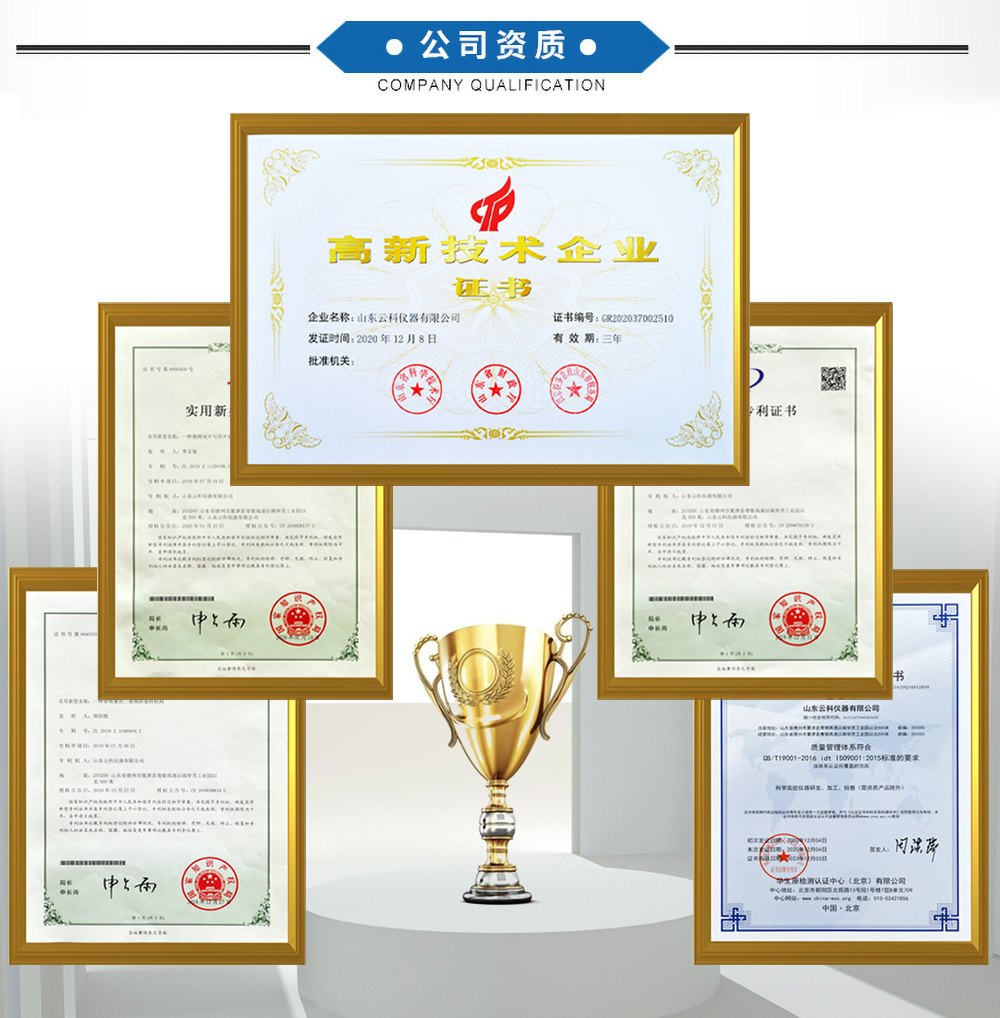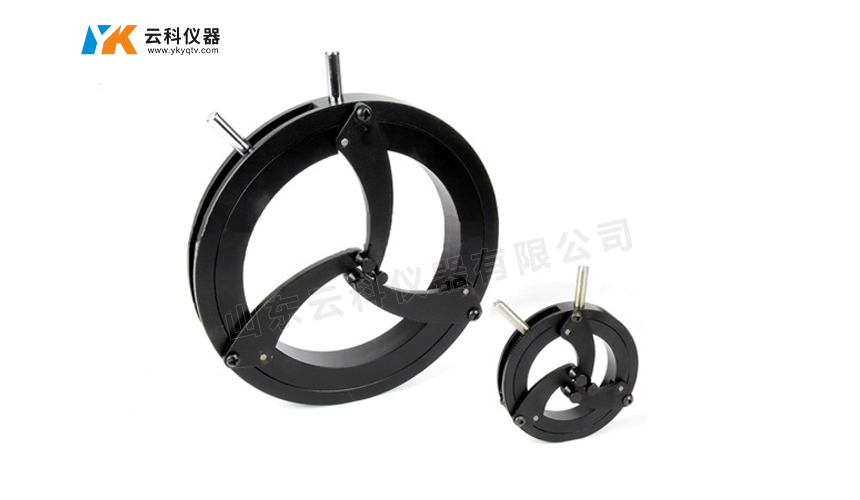
HGMML4 series self-centering lens stand
HGMML4 series self-centering lens stand
Features:
· Three supporting arms are opened continuously at the same time, suitable for lenses of different diameters;
· When the lens is replaced, the center of the lens remains unchanged;
· Spring automatic reset, suitable for light weight lens.
技术参数
| 型号 | A(夹持透镜直径) | B | C | D | E | F | 自重(kg) | |
| MAX(mm) | MIN(mm) | |||||||
| HGMML450 | 50 | 5 | 46 | 70 | 90 | 11 | 19 | 0.15 |
| HGMML476 | 76 | 5 | 72 | 102 | 126 | 16 | 30 | 0.2 |
| HGMML4102 | 102 | 5 | 100 | 140 | 160 | 16 | 30 | 0.3 |
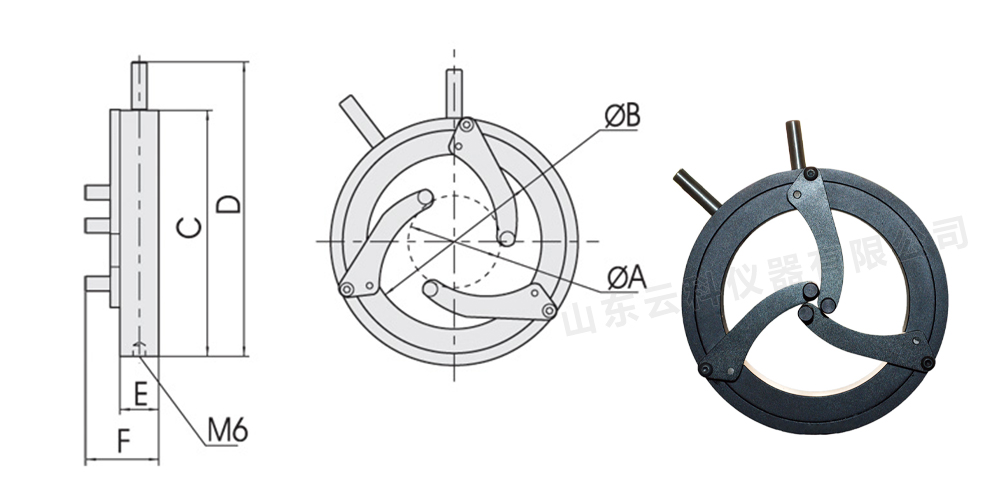
产品图片
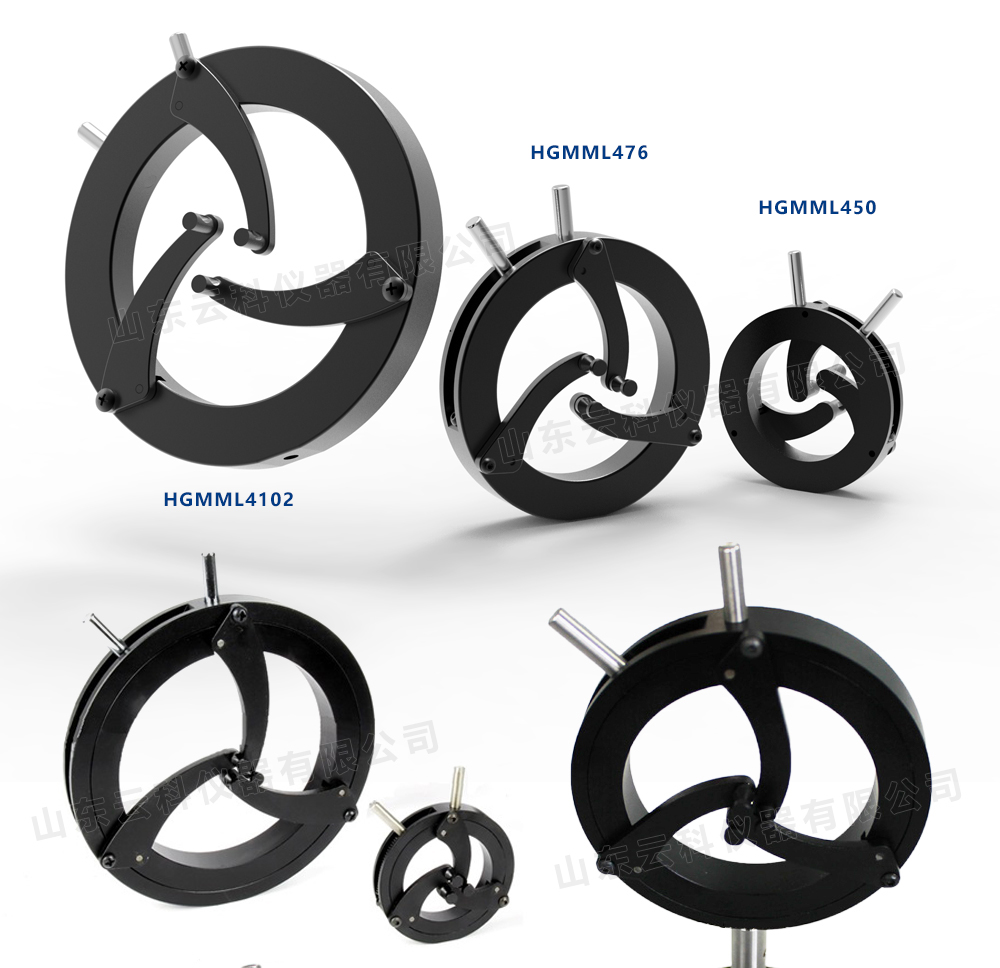
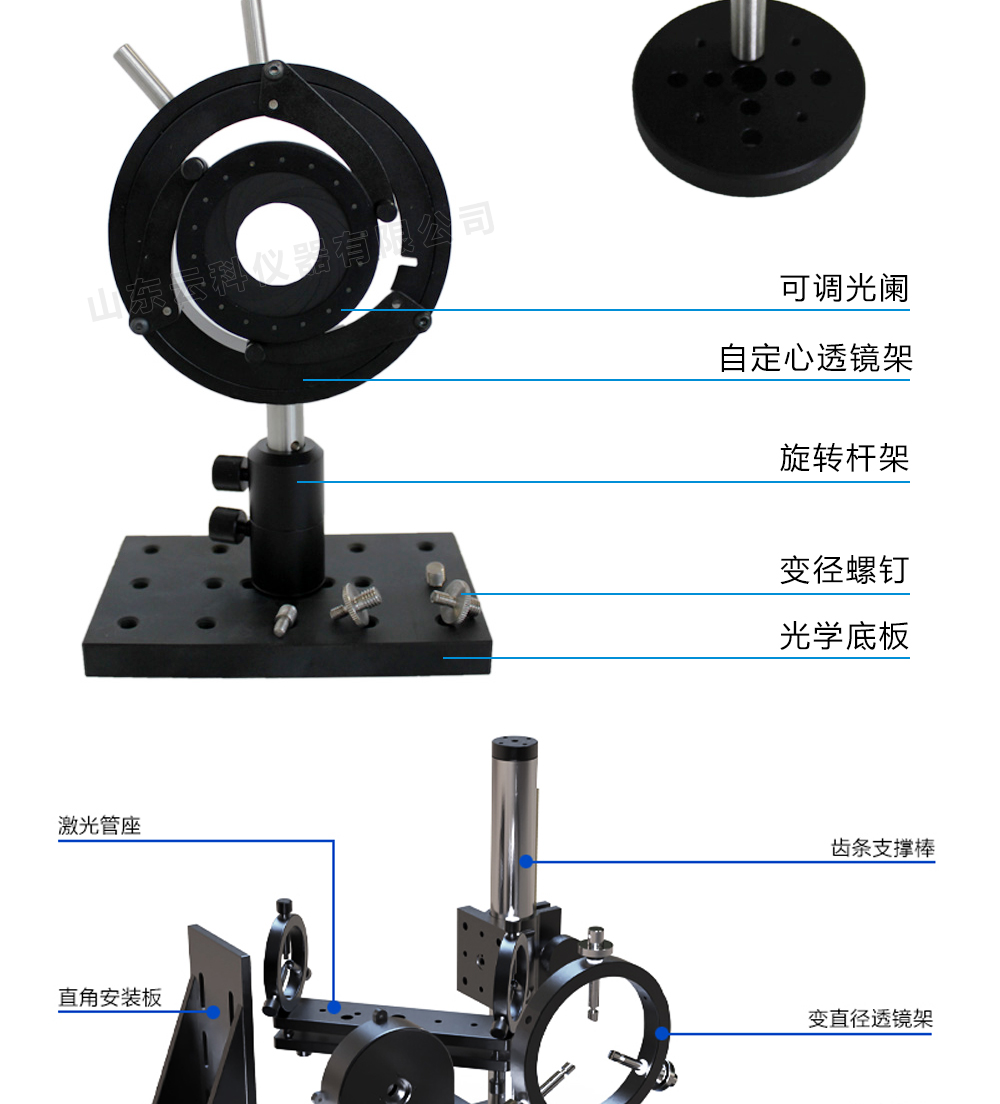
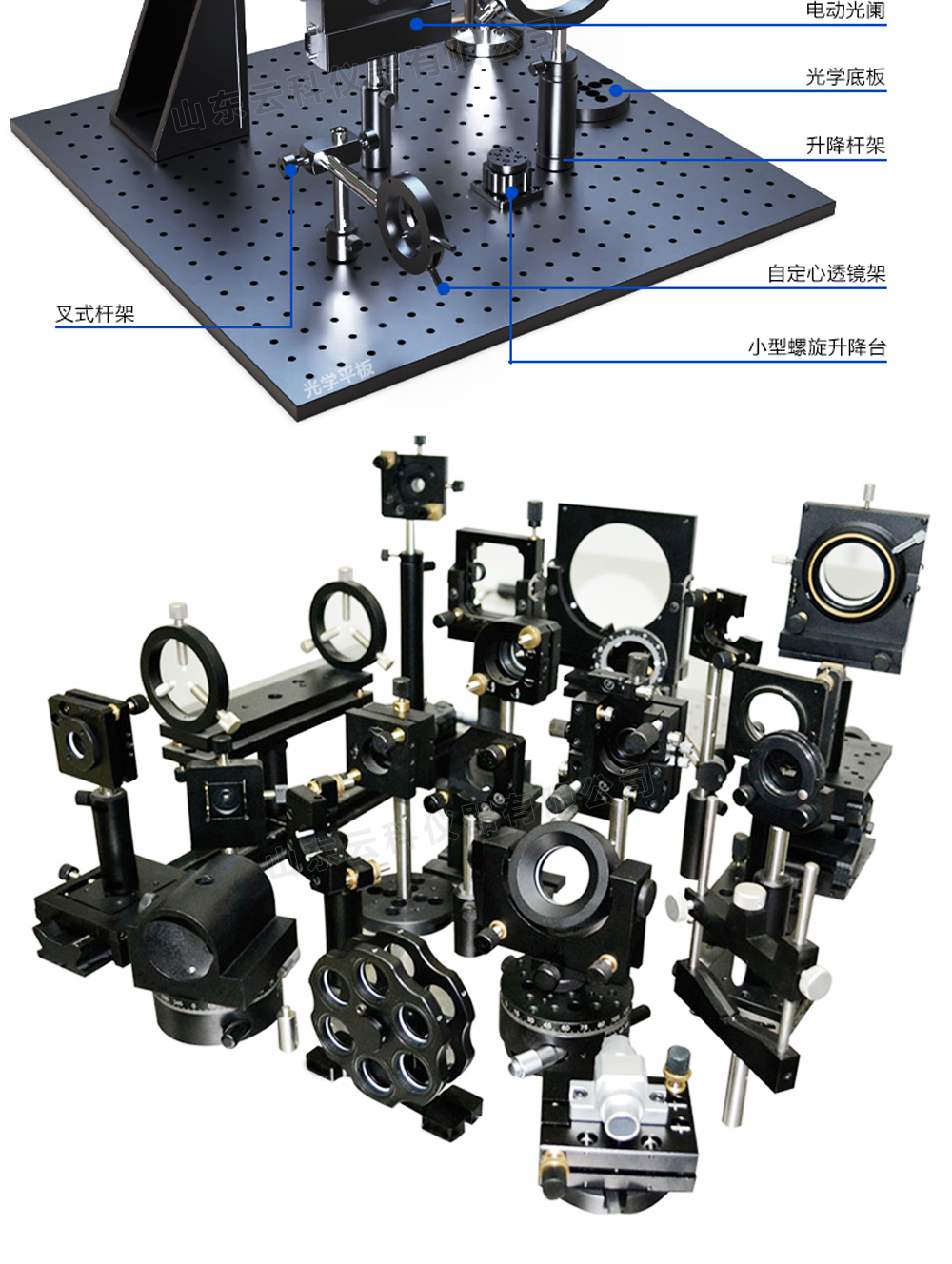
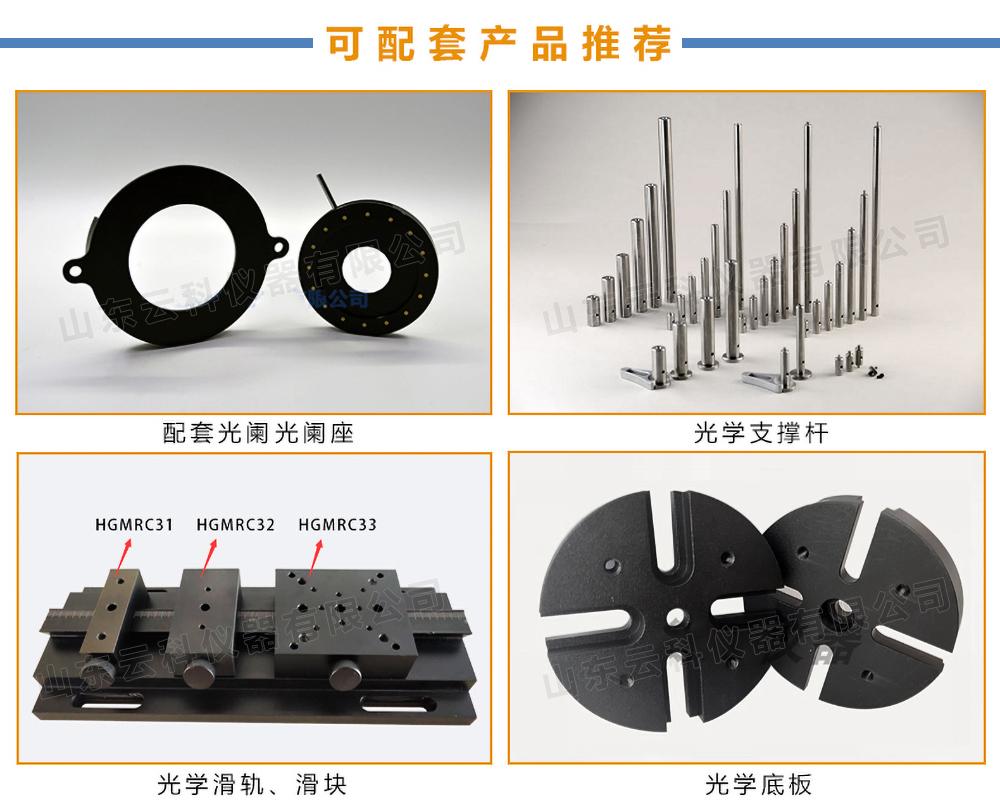
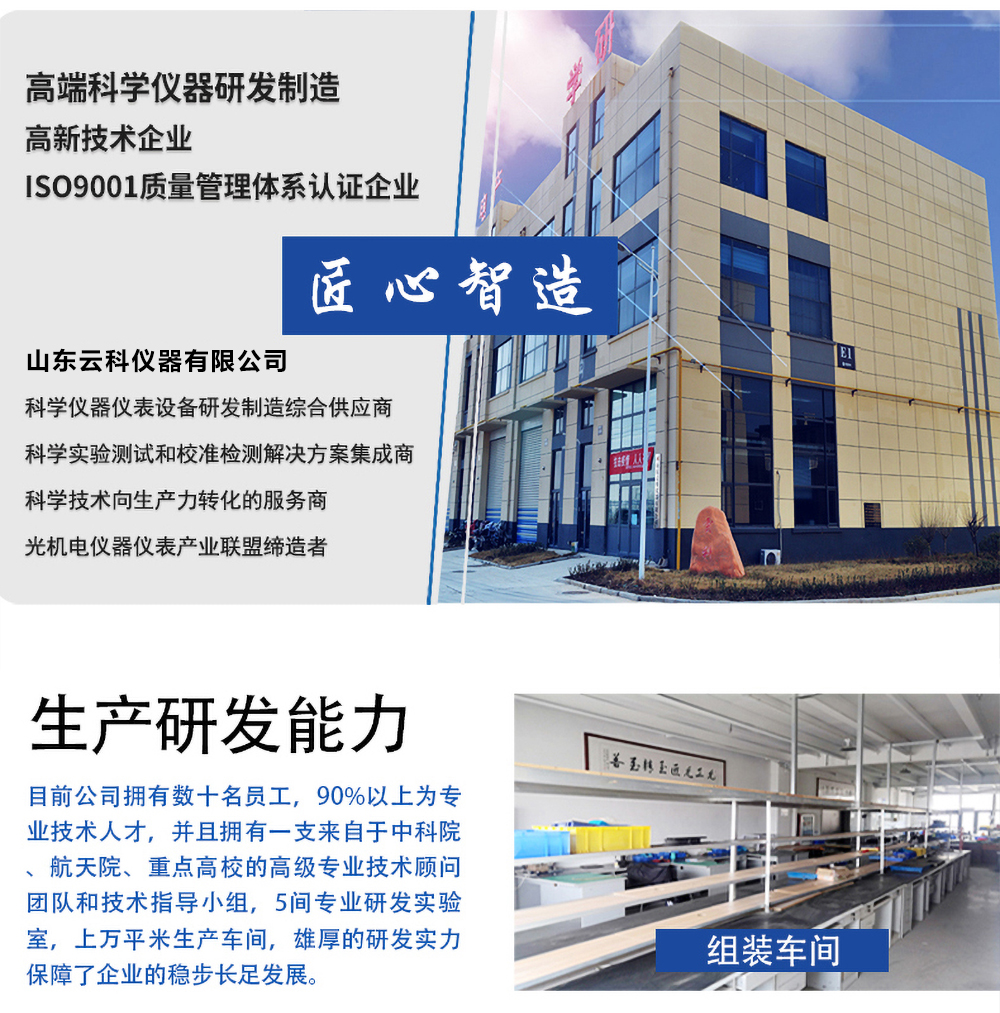
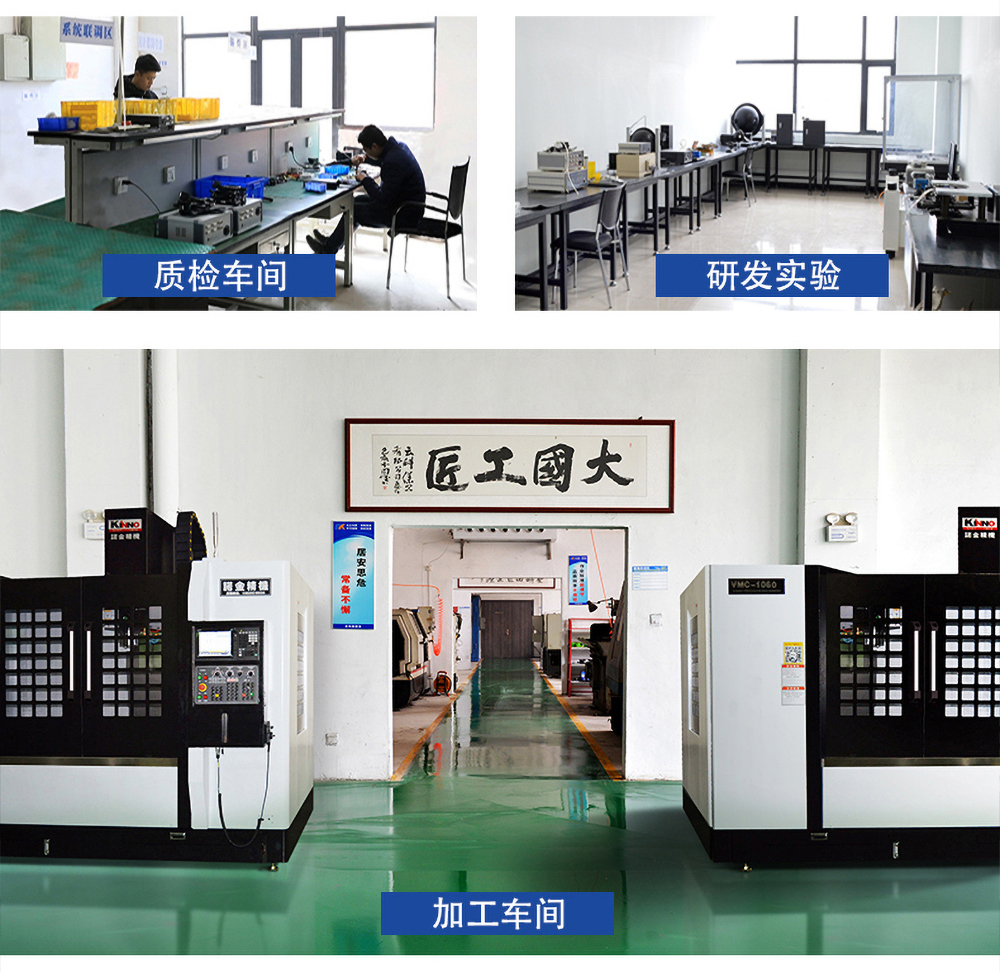
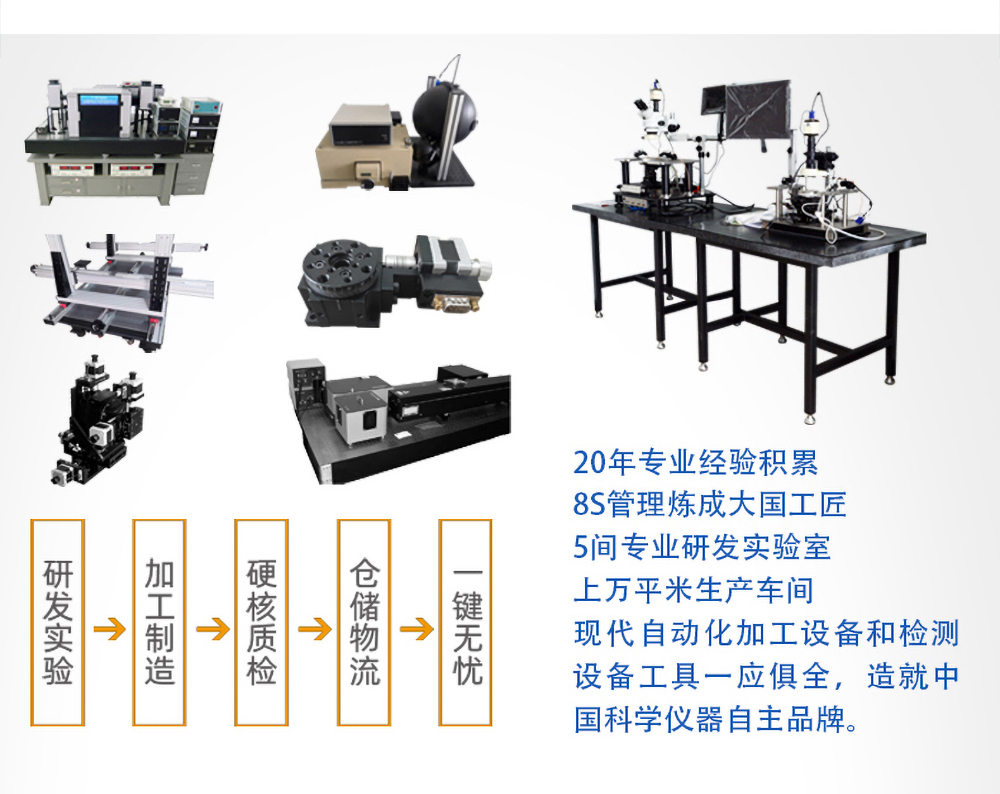
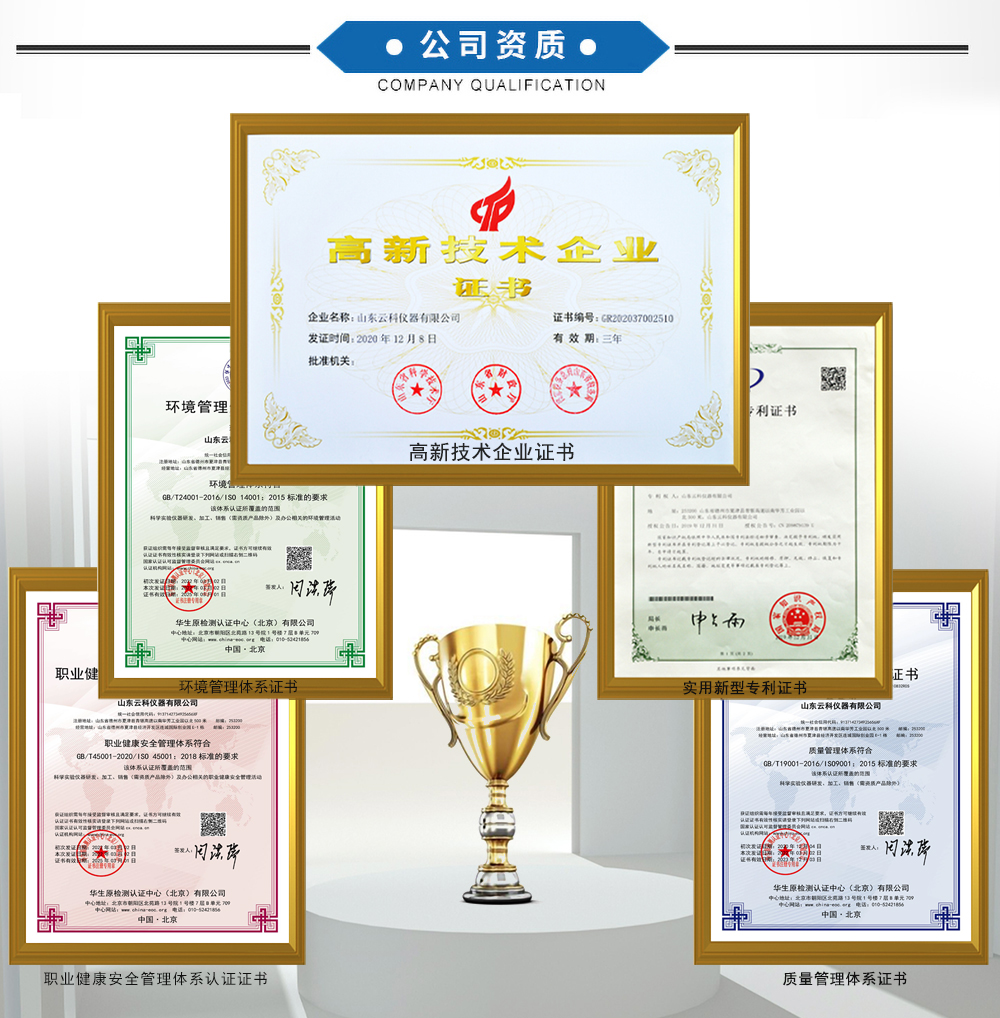
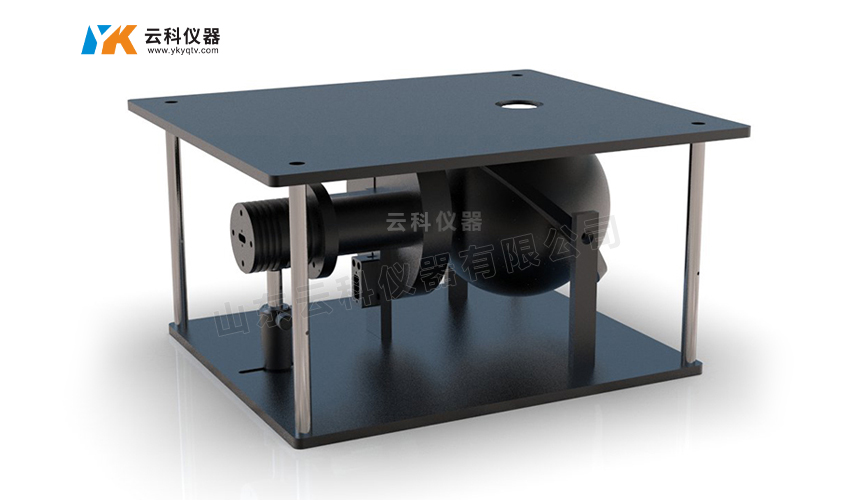
HGISA150C93N002 Integrating sphere uniform light source
HGISA150C93N002 Integrating sphere uniform light source
Technical parameters:
1. 2856K color temperature uniform light source, exit 30mm (one in, one out, two ports);
2. The inlet light is equipped with an aperture and the electric filter wheel can realize automatic dimming;
3. Internal light baffle of light inlet, illumination uniformity of light outlet is better than 98%;
4. The lowest illumination can reach 10-7Lx, 10-5Lx;
5. Electric filter wheel light aperture 40mm (4 holes)
6 halogen hook light source: 5W, 10W, 30W, 50W optional;
7. Weight of equipment: 8kg;
8. The overall size and product video of the equipment are as follows:
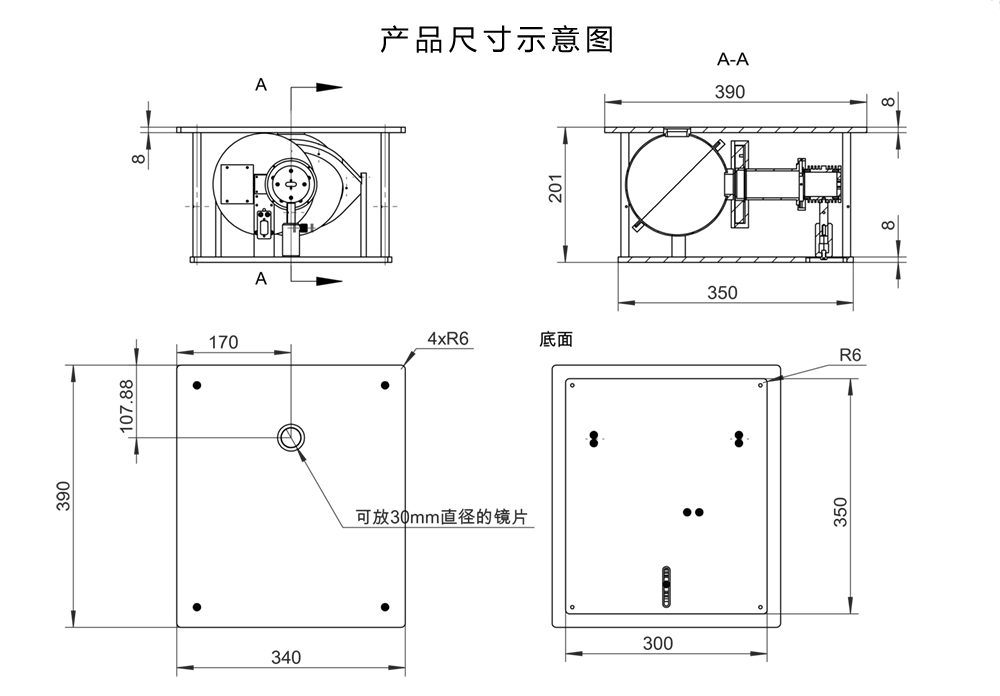
产品实拍
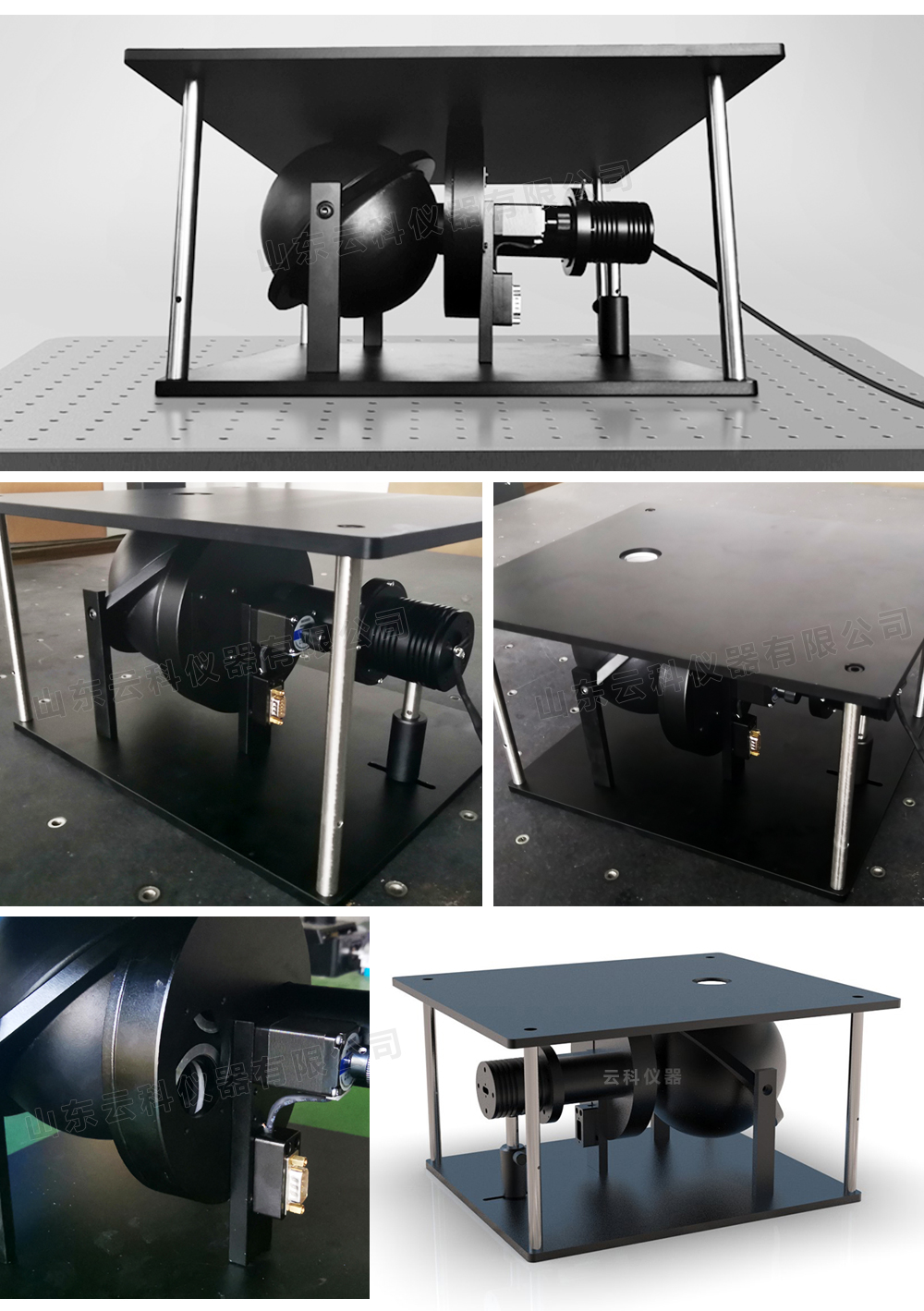
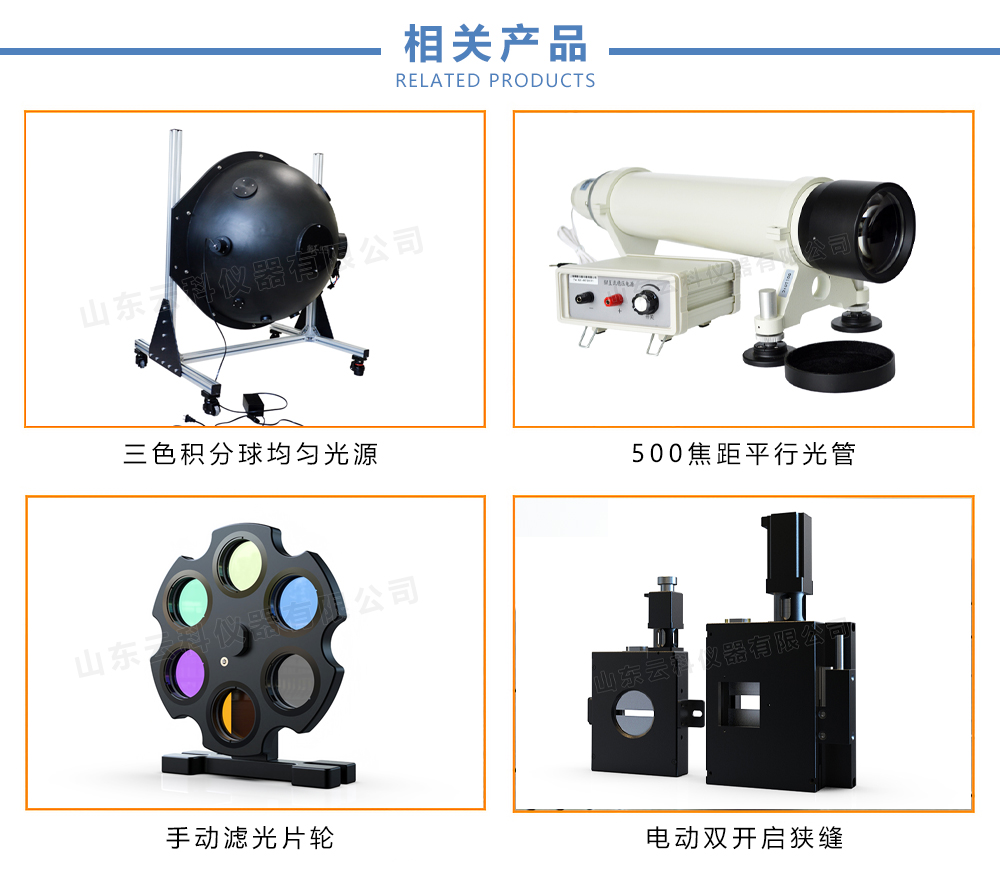
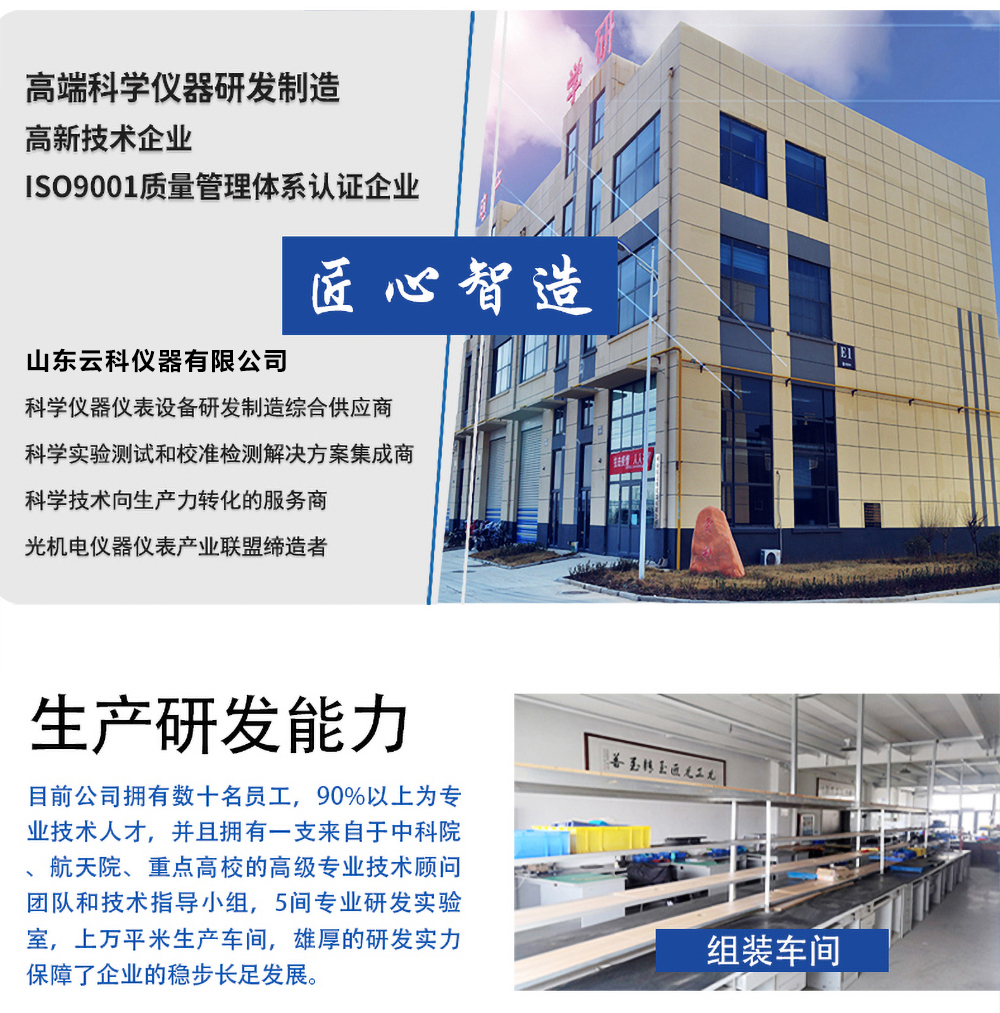
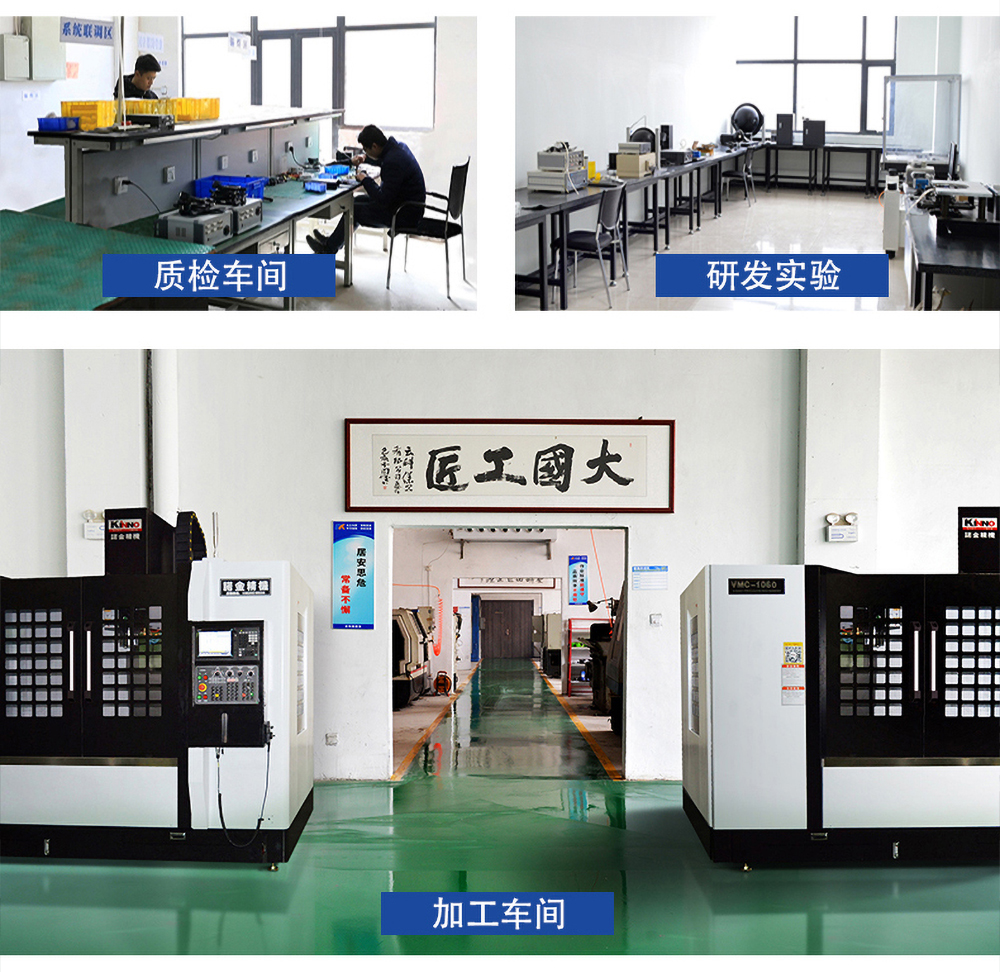
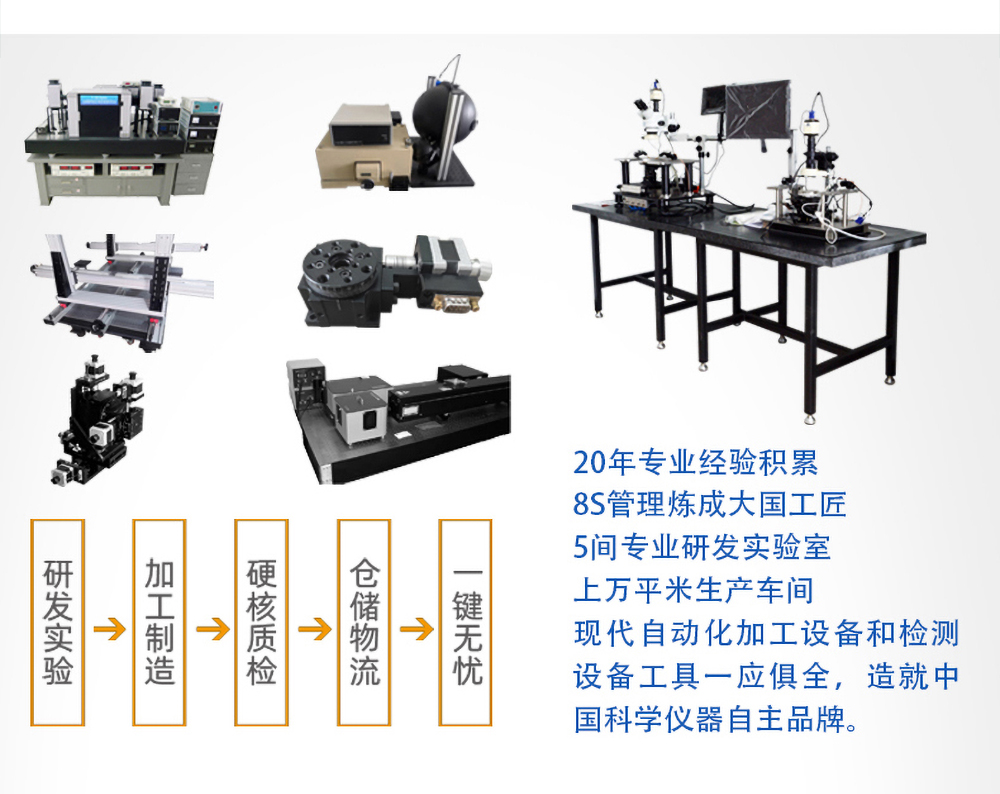
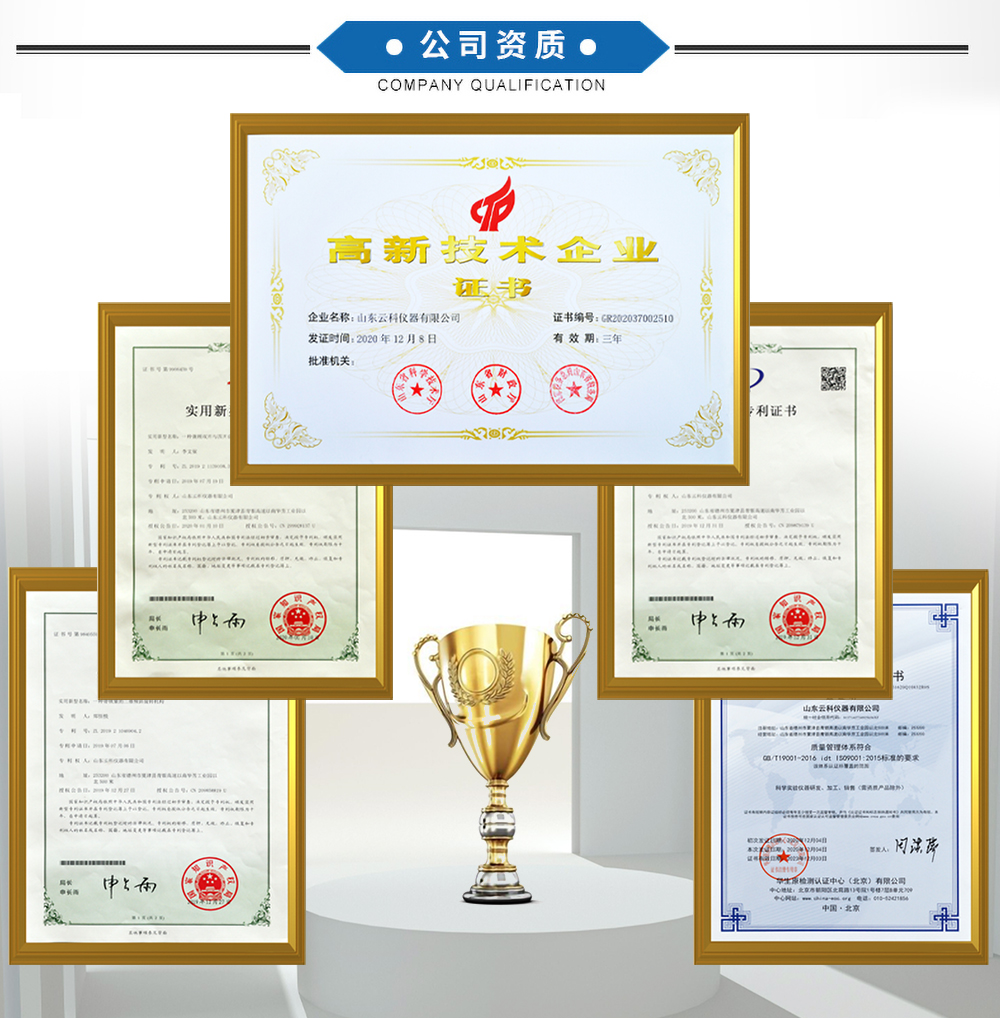
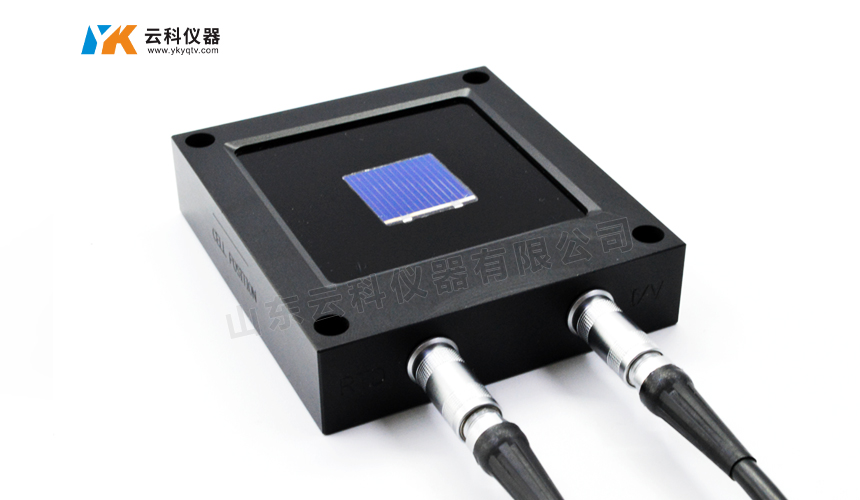
Single crystal silicon standard solar cell
Single crystal silicon standard solar cell
Standard battery uses:
Standard solar cells are usually used for daily calibration or testing the total irradiance (W/m2) established by light sources (xenon lamps, solar simulators, etc.) on the surface of the solar cell under test. When the irradiance of the solar simulator changes, the ratio of the short-circuit current generated on the solar cell to the irradiance of the solar simulator is close to constant, so the irradiance of the sun can be obtained by measuring the short-circuit current. The calibration value of the solar cell is defined as: under standard test conditions, the ratio of the short-circuit output current of the standard solar cell to irradiance, unit A/(W/m2), known as CV value. When the short-circuit current of the solar cell is equal to its calibration value, the irradiance of the solar simulator can be considered to reach a solar constant, namely 1000W/m2.
By measuring the spectral responsivity R(λ) of solar cells at different wavelengths, it is compared with the solar radiation spectral distribution of standard AM1.5 or solar simulator spectrum
The short-circuit current density can be obtained by multiplying and integrating the radiation distribution S(λ), and the short-circuit current can also be obtained by multiplying the effective light-receiving area of the battery:
Jsc = ∫ R (lambda) * S (lambda) d lambda, Isc (including A R = Jsc (lambda) - spectral responsivity, unit A/W;
S(λ)-- spectral irradiance distribution, unit W/m2/nm;
A-- Effective light area of the battery, unit A.
Other applications:
Calibrate the light intensity of the solar simulator
Calibrate the light stability of the solar simulator
Calibrate the spot uniformity of the solar simulator
The difference between primary calibration and secondary calibration:
First-level calibration: calibration institutions with calibration qualifications (such as China Metrology Institute, etc.) have been calibrated and measured and issued certificates.
Secondary calibration: the calibration sample obtained by transferring data from the first calibration sample
The accuracy of the data is the same. The secondary calibration samples of Yunke are transferred from the calibrated samples of China Institute of Metrology, and the equipment used has been calibrated to ensure the standard of data. We are responsible for the traceability of data.
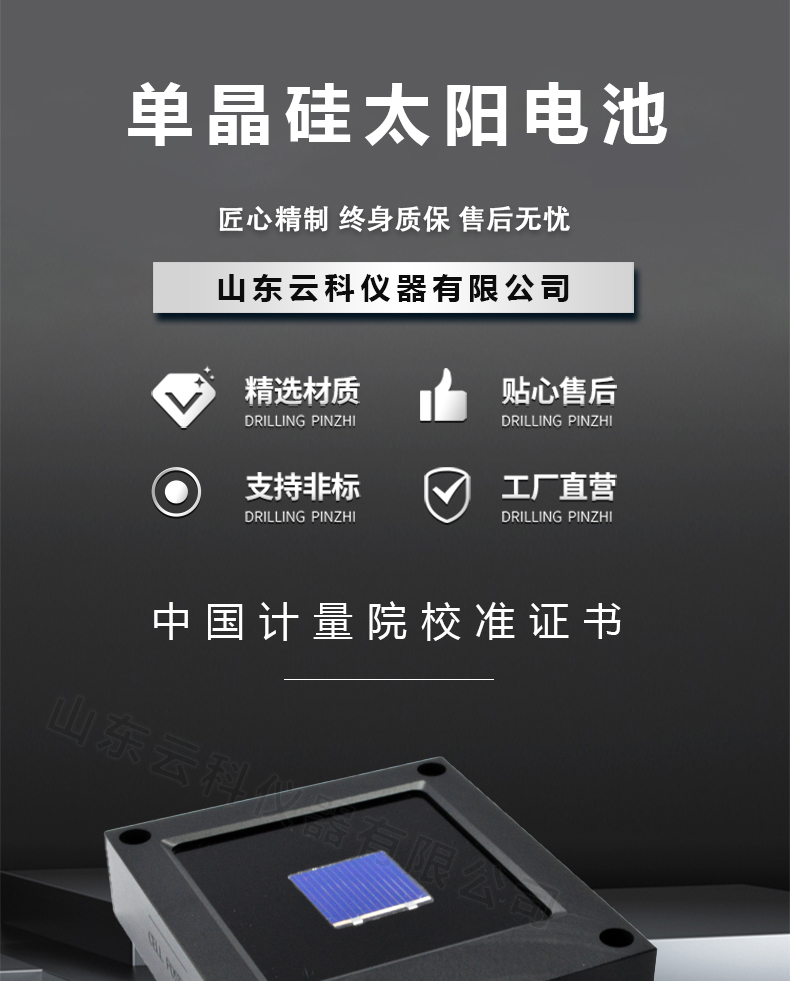
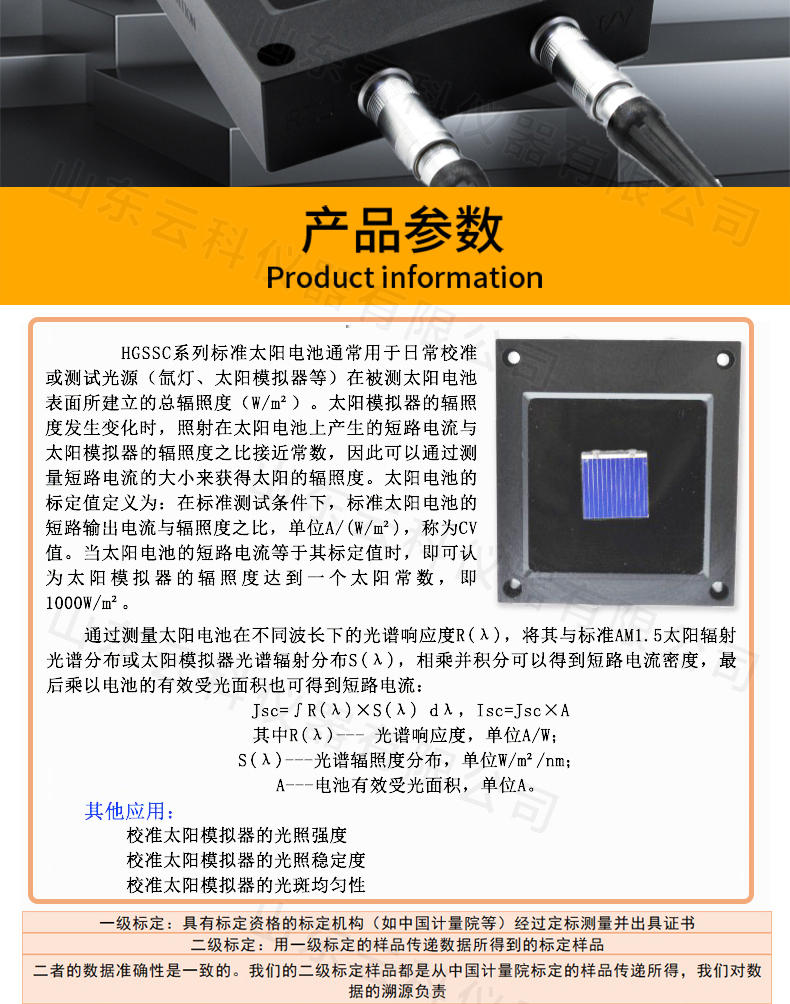
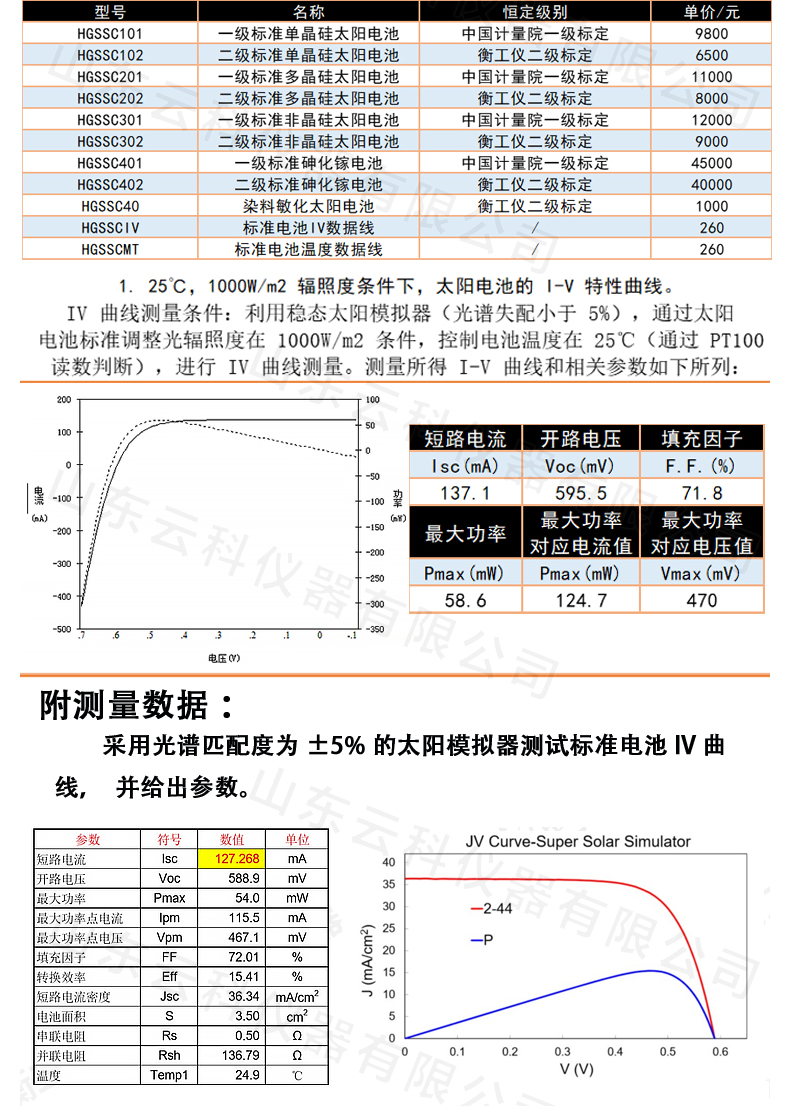
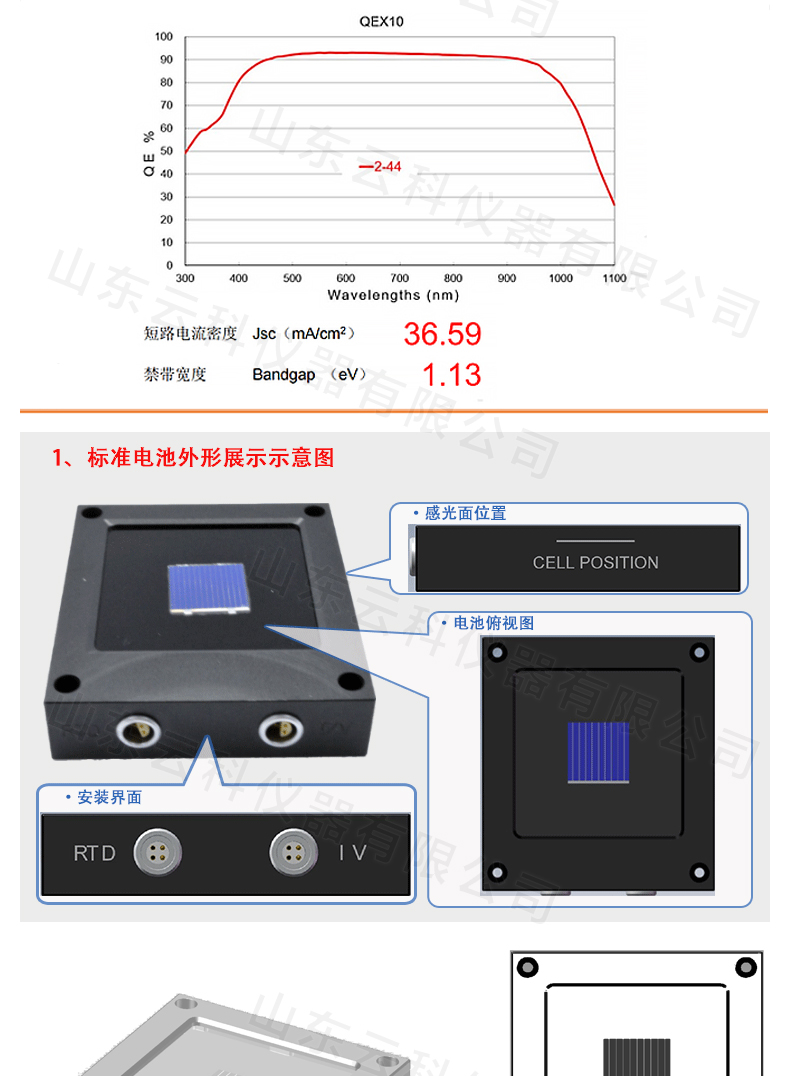
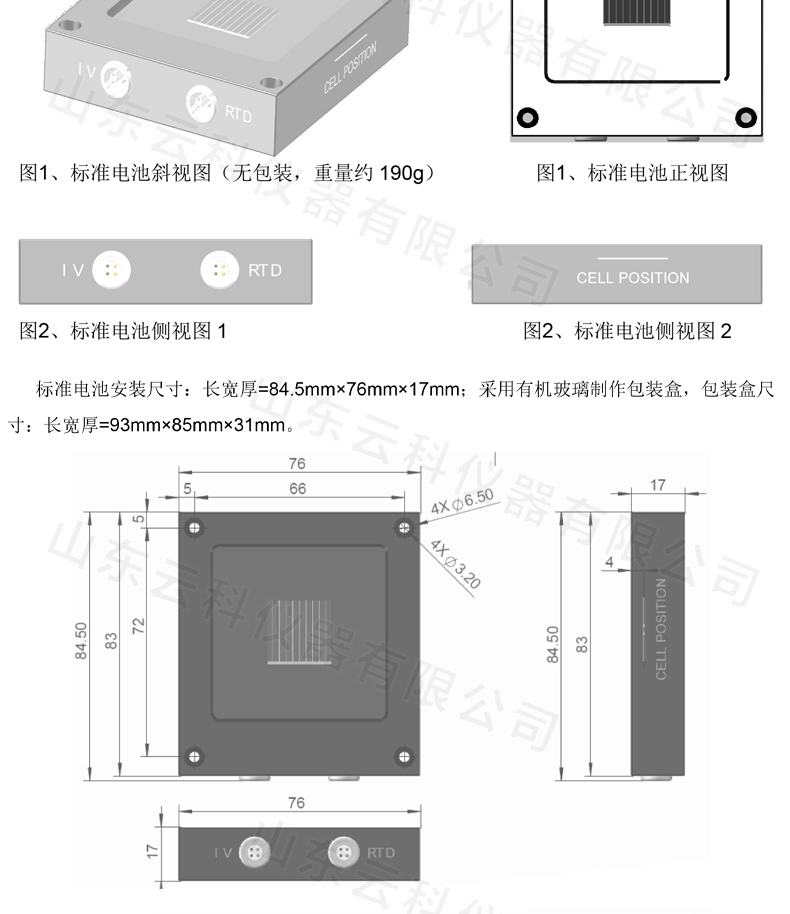
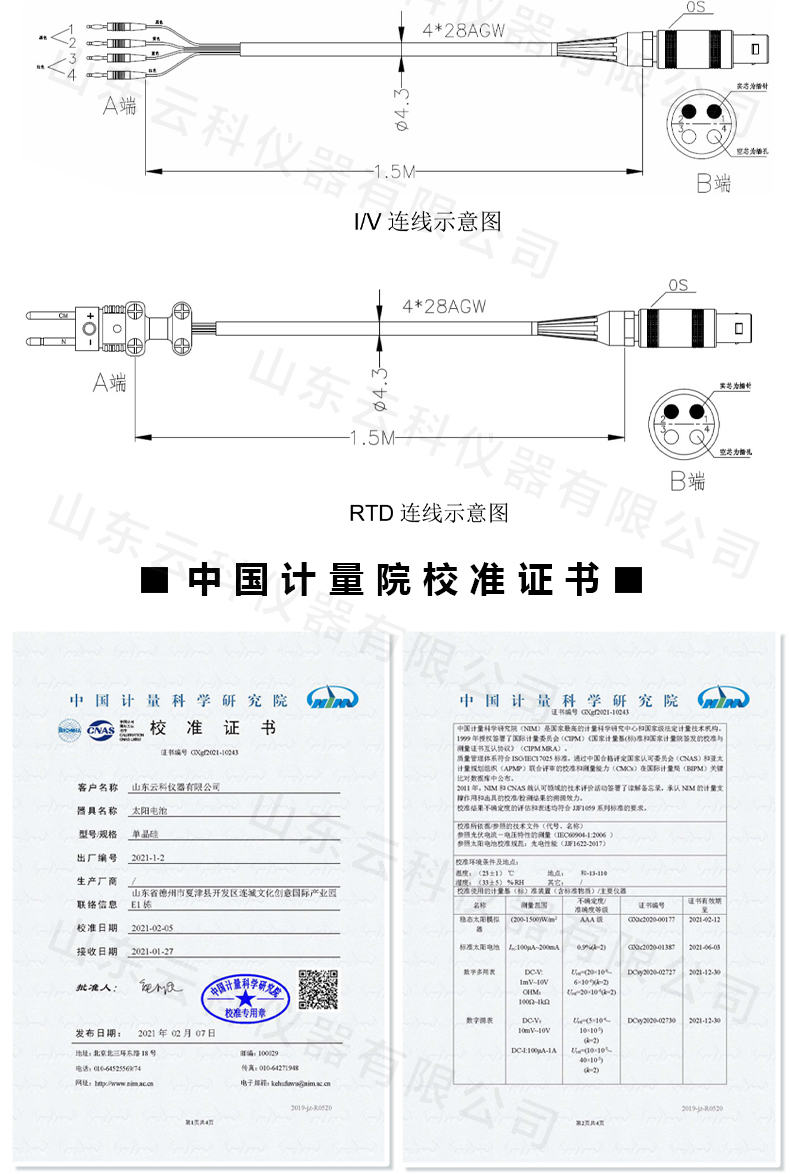
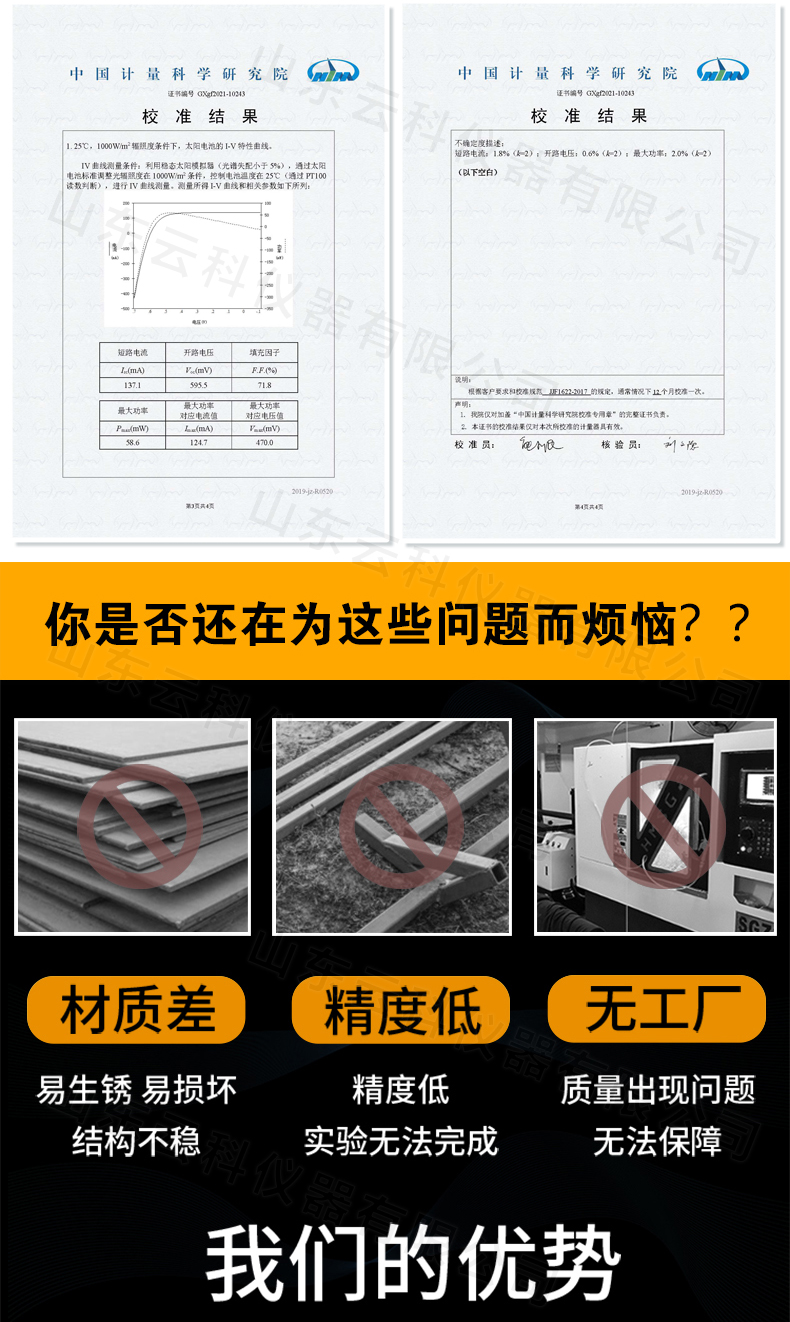
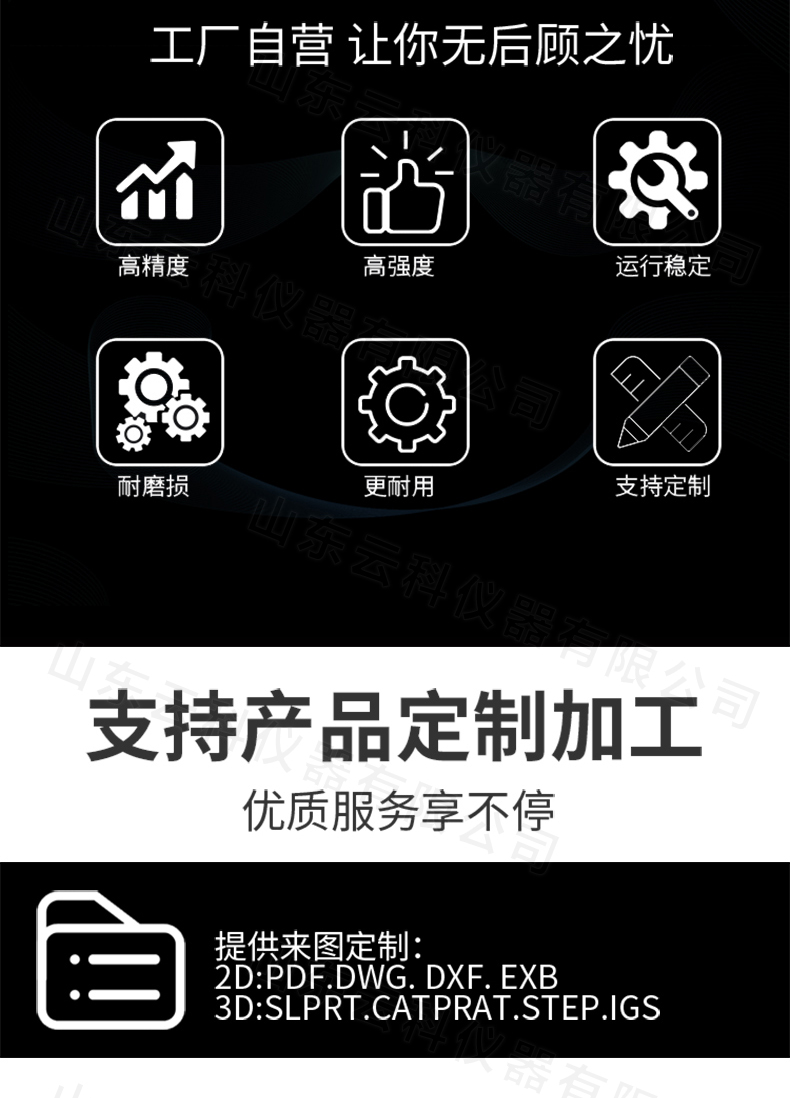
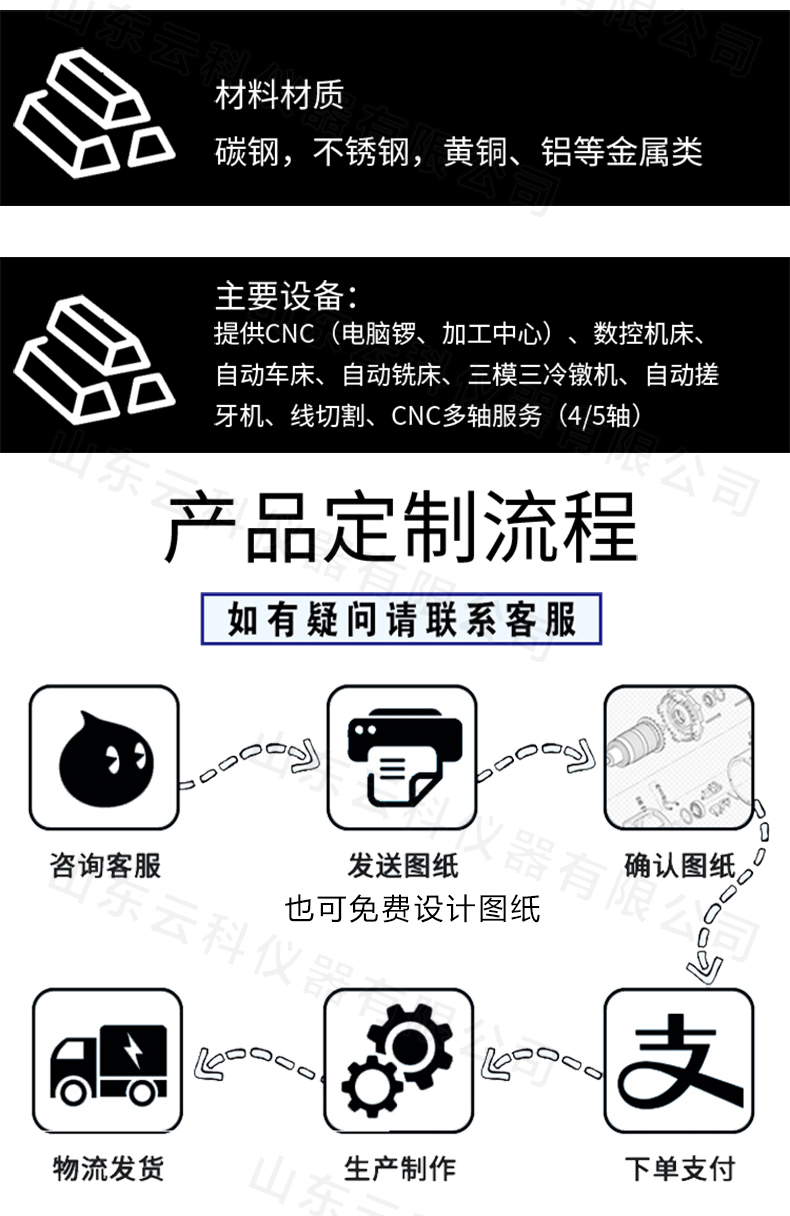
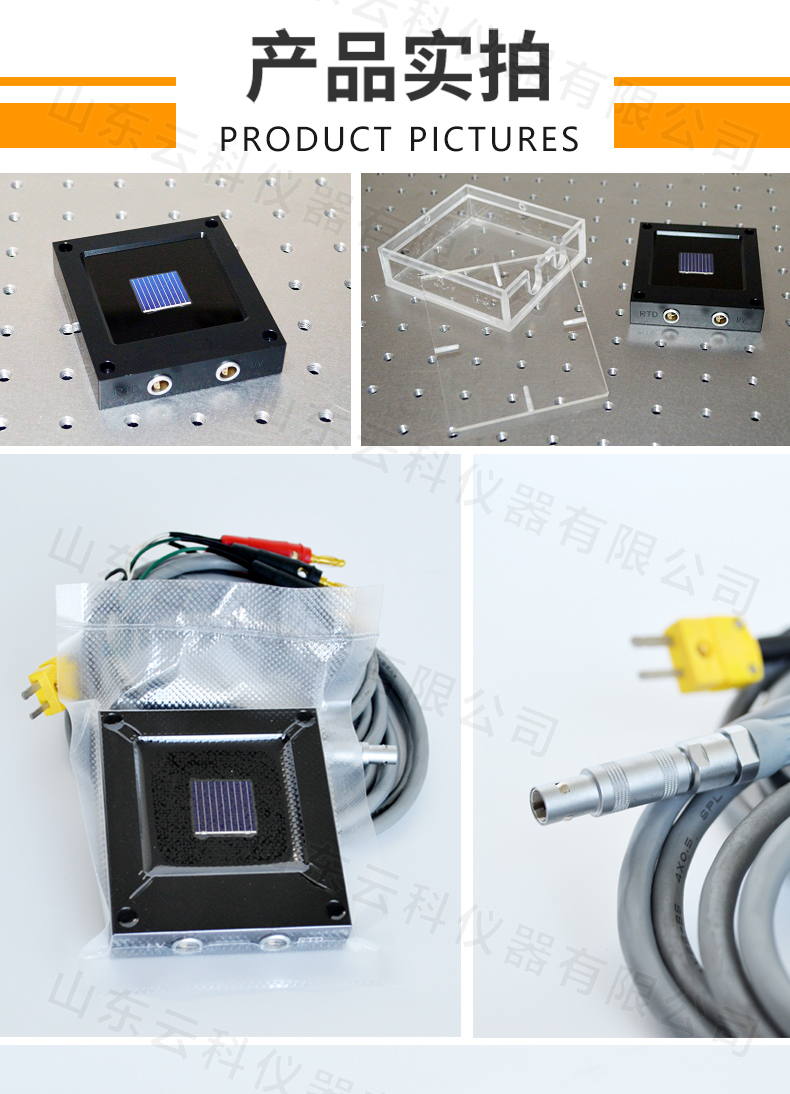
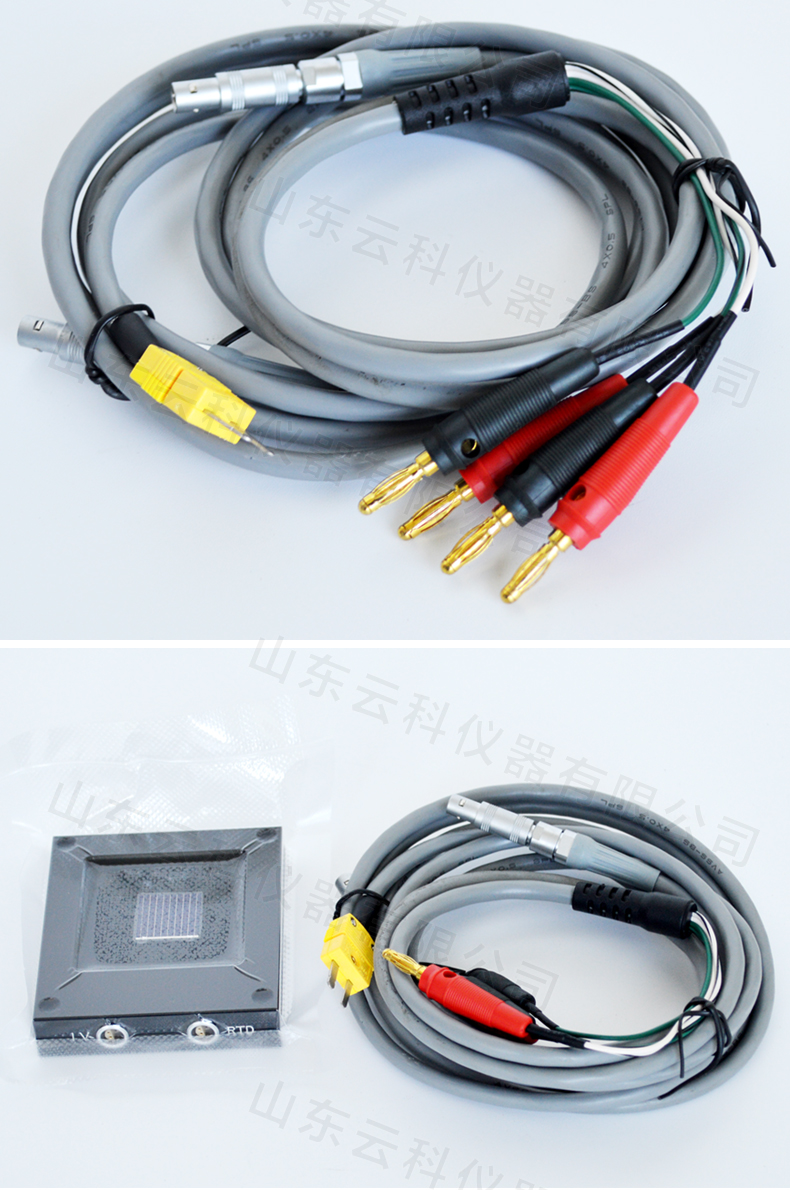
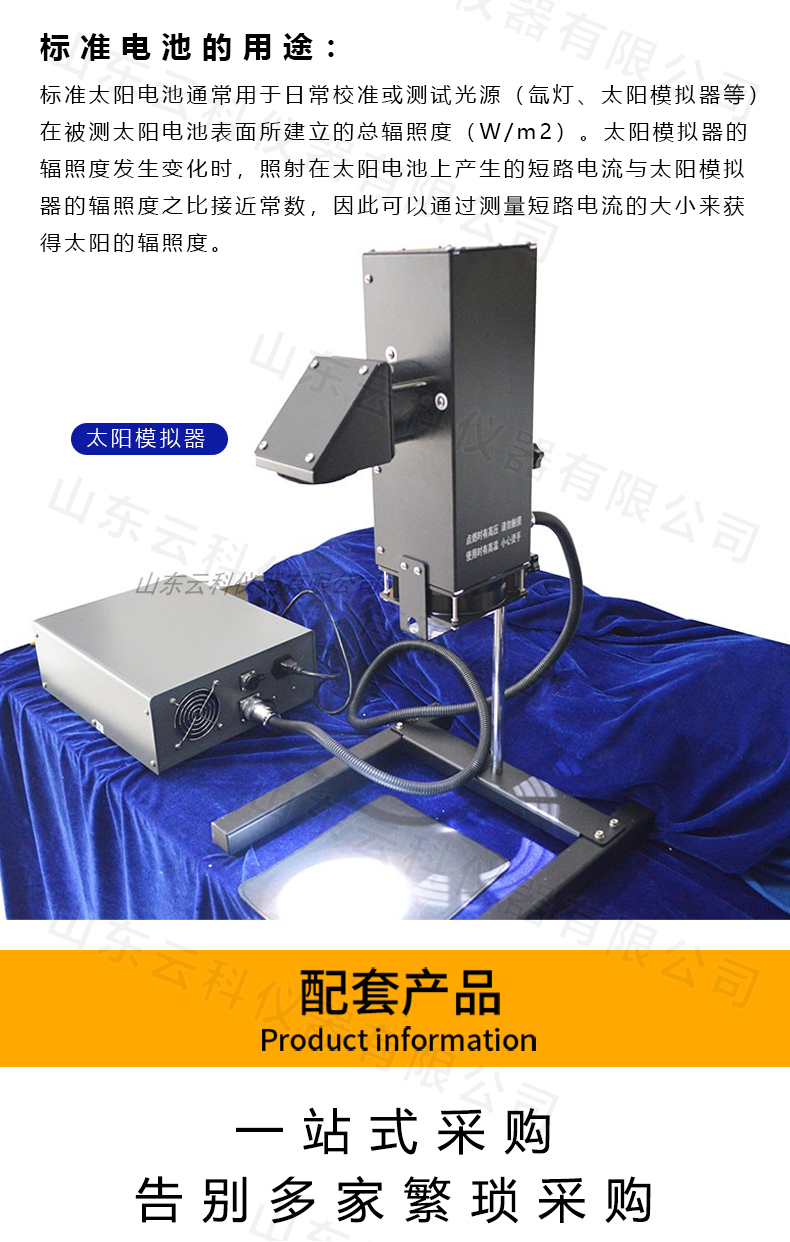
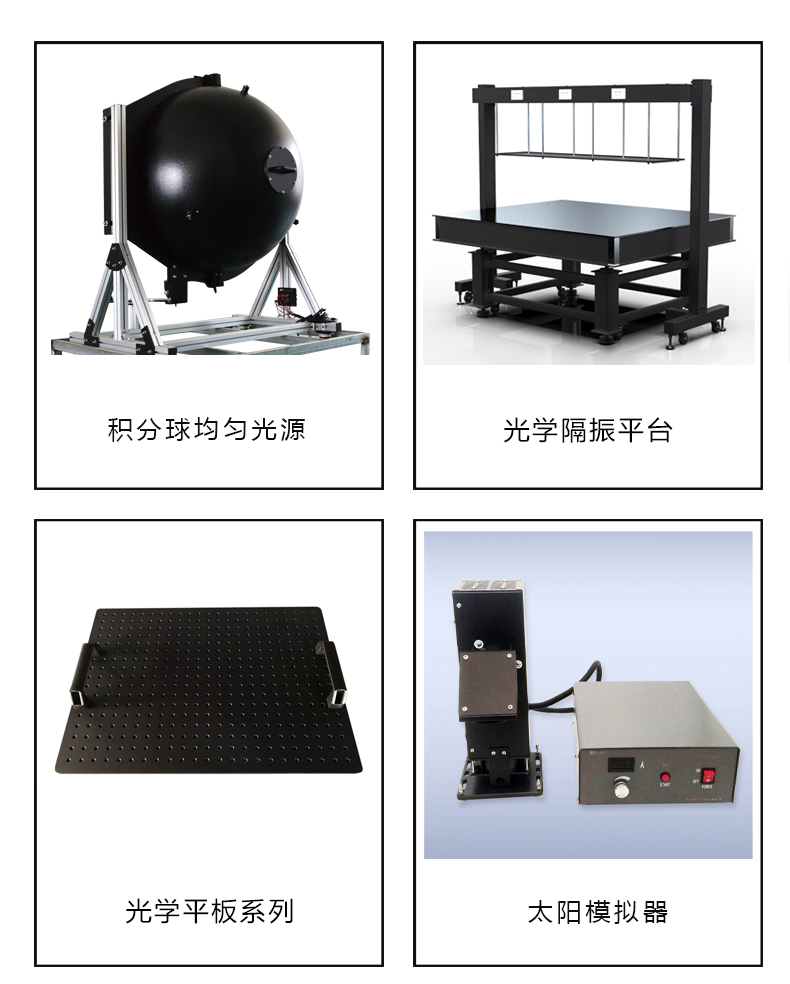
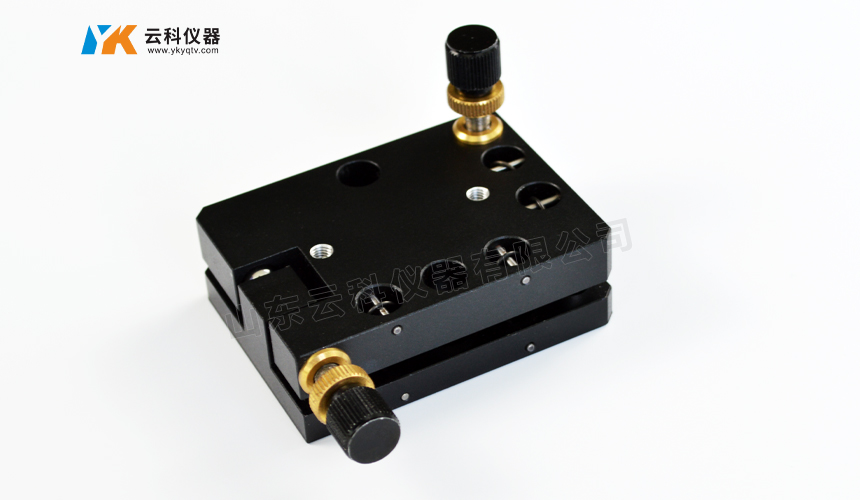
HGIM0602 Double shaft manual tilting table
HGIM0602 Double shaft manual tilting table
Product features:
1. Provide two dimensional tilt adjustment for pitch and horizontal rotation;
2. Fine tooth screw drive, copper nut locking screw, compact structure, easy to operate;
3. High quality tension spring reset.
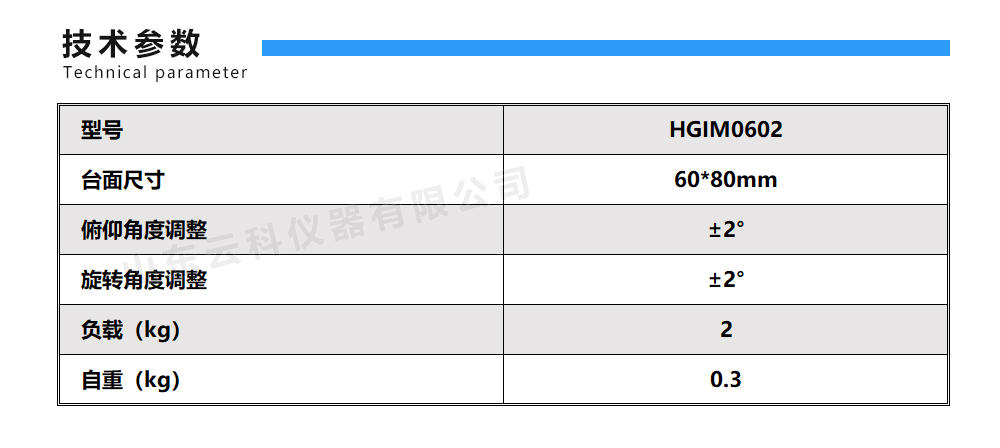
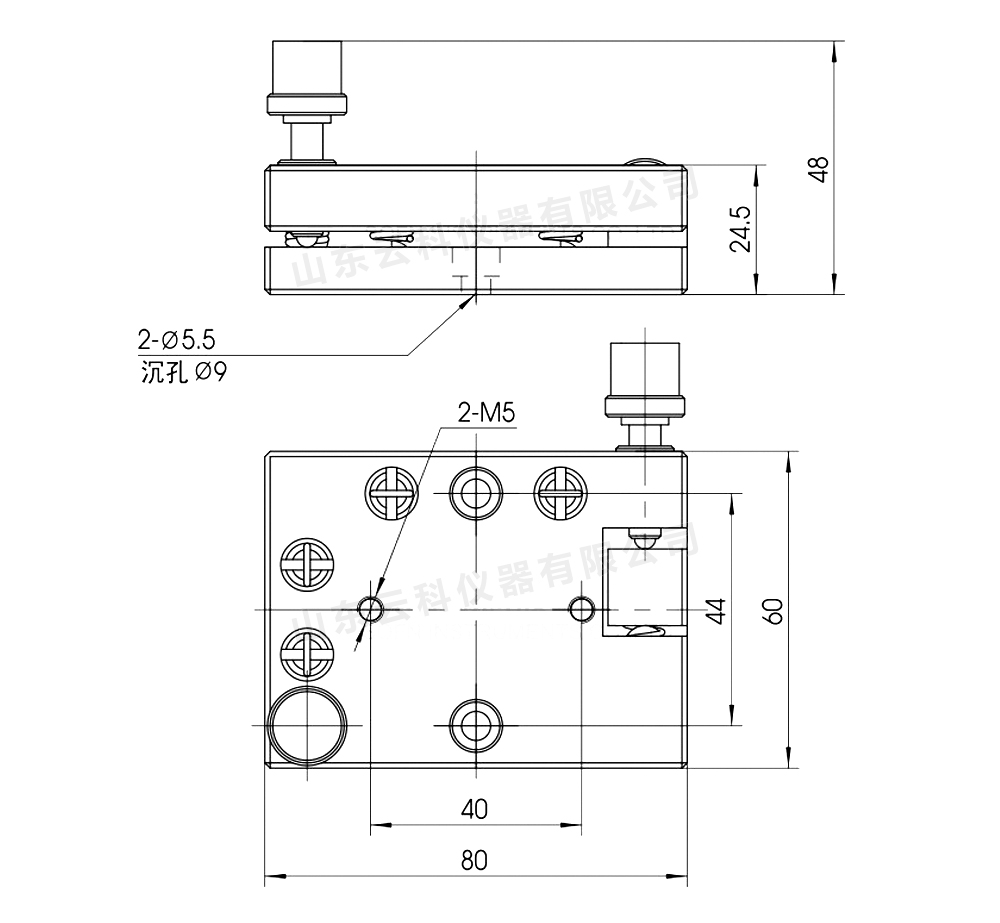
产品图片
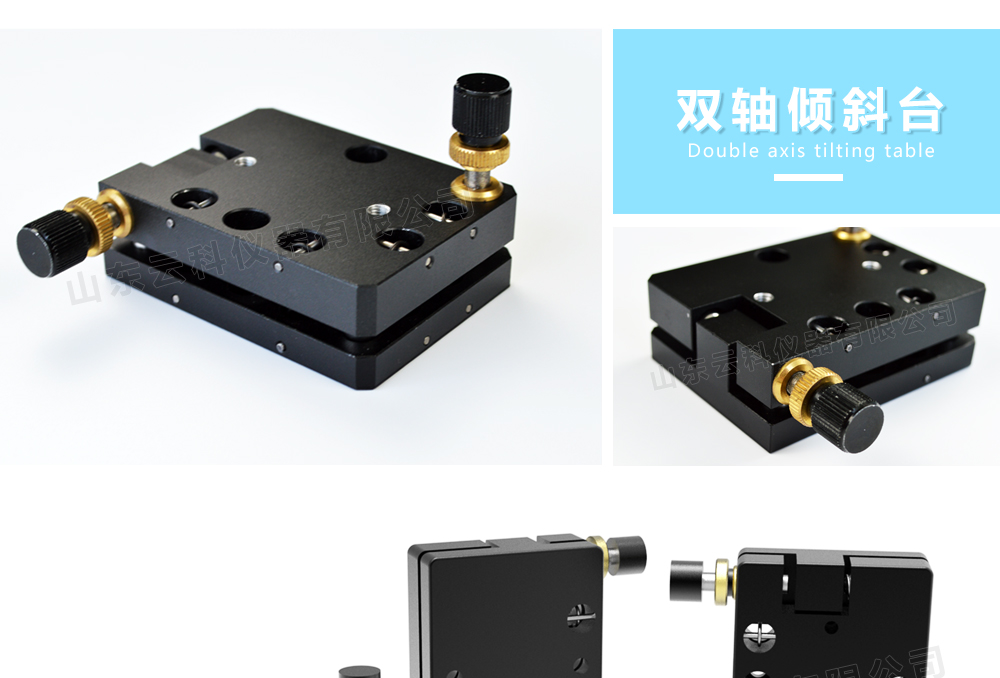
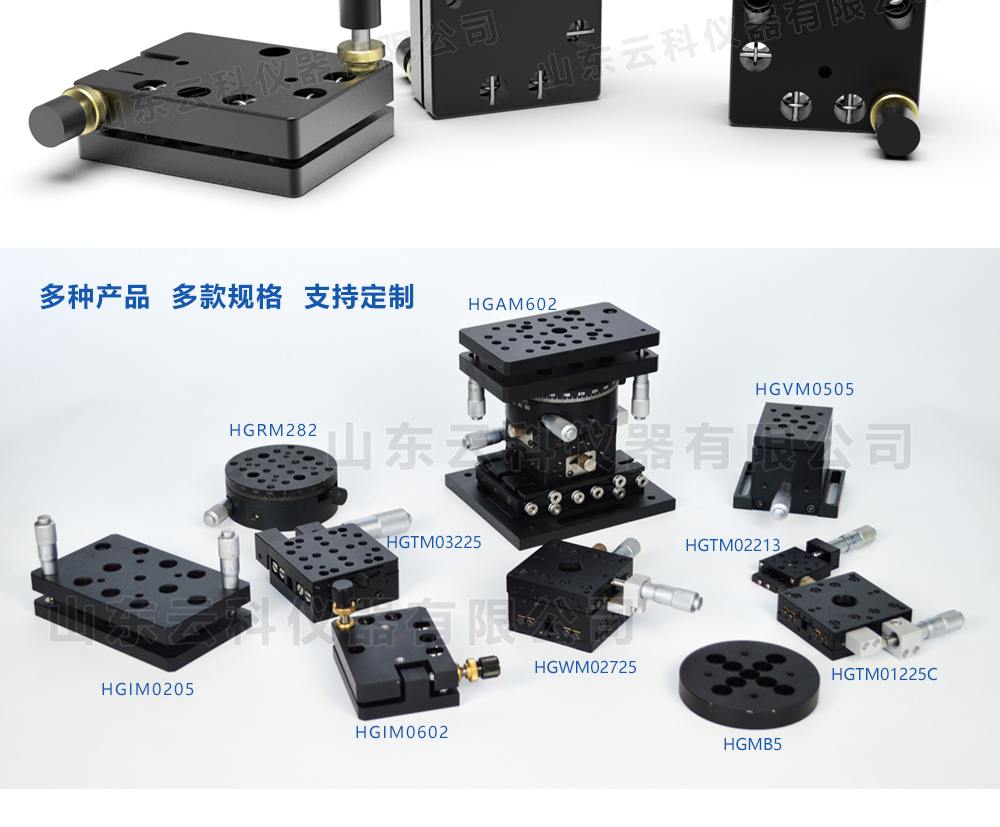
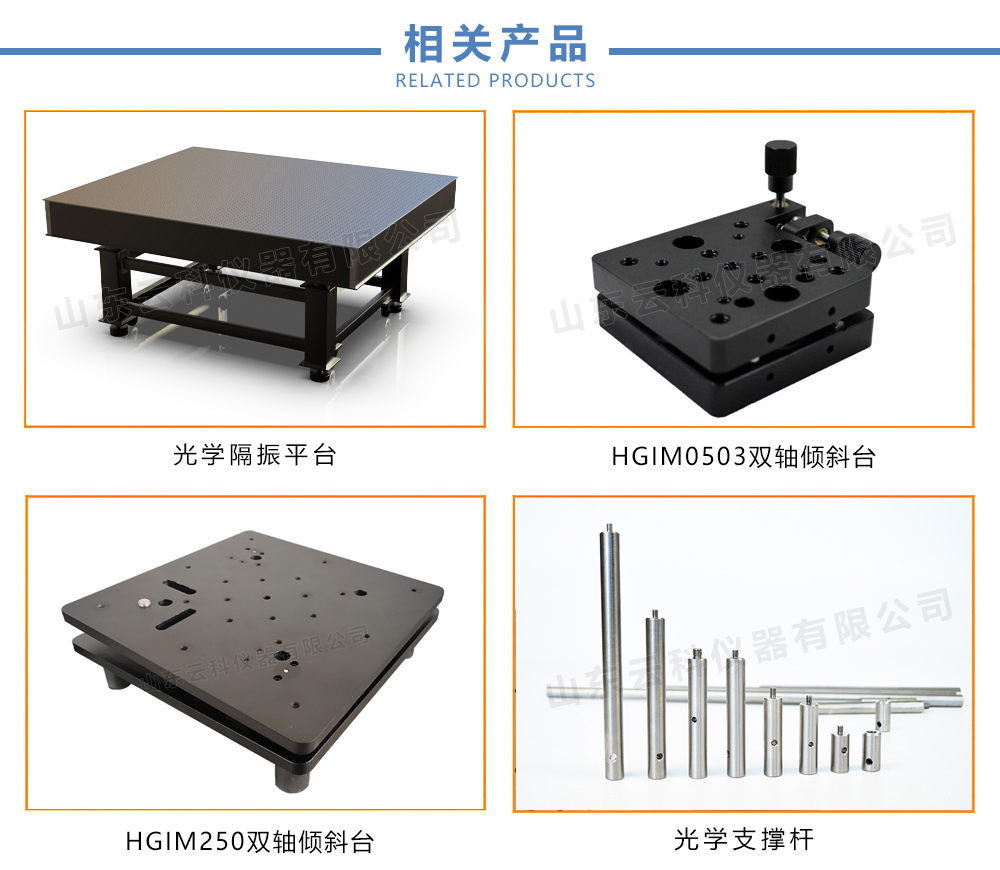
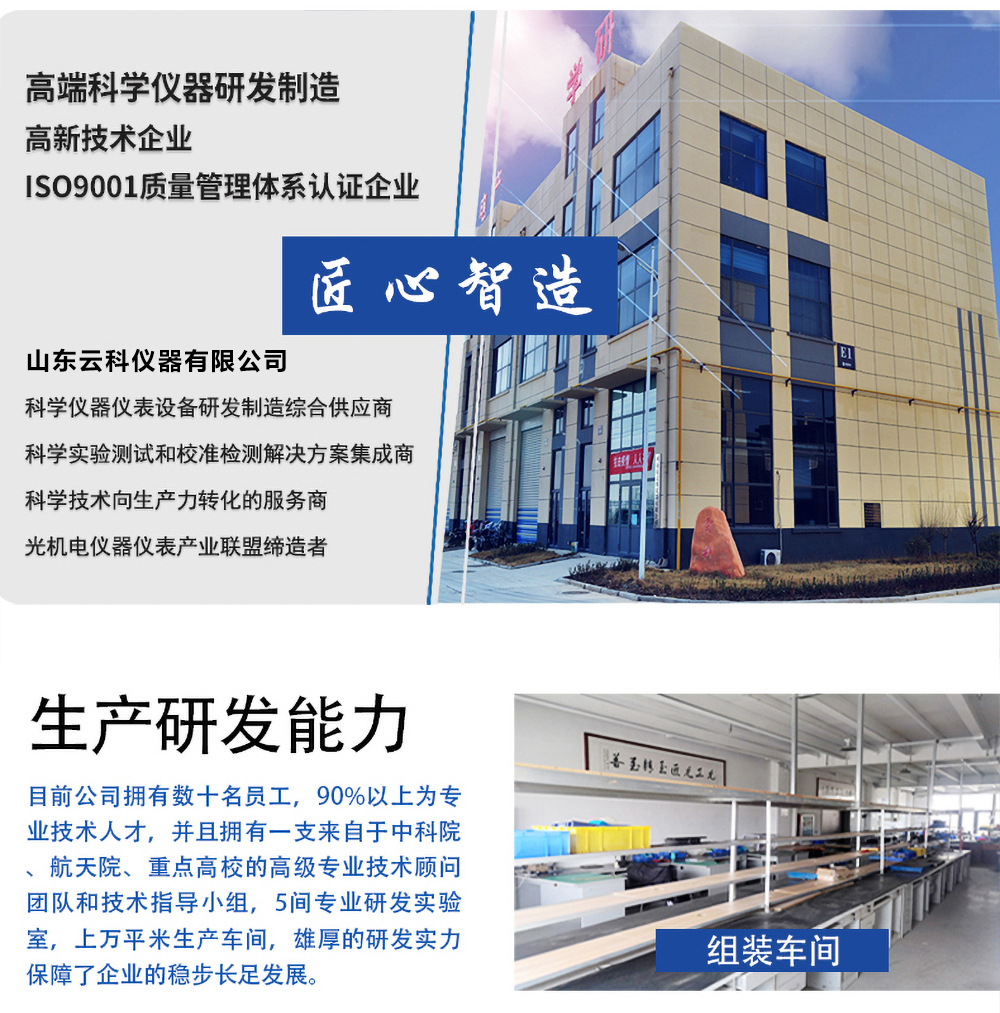
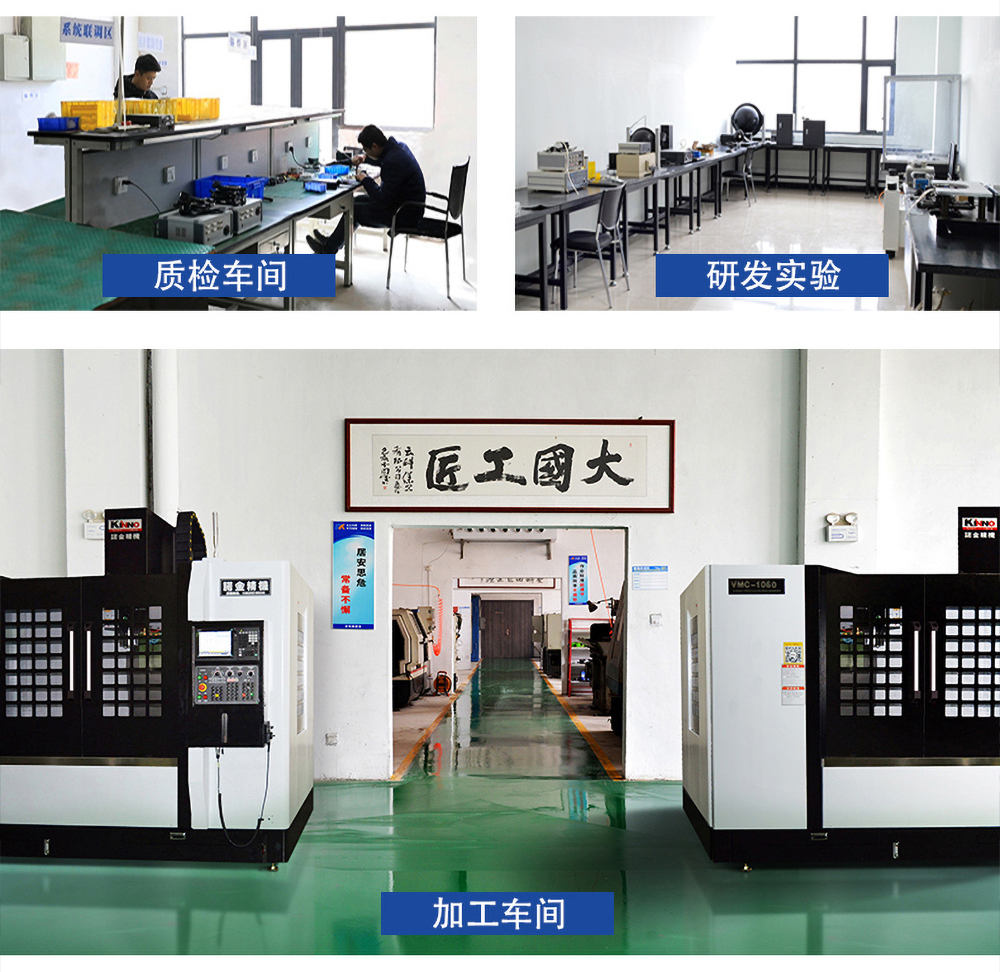
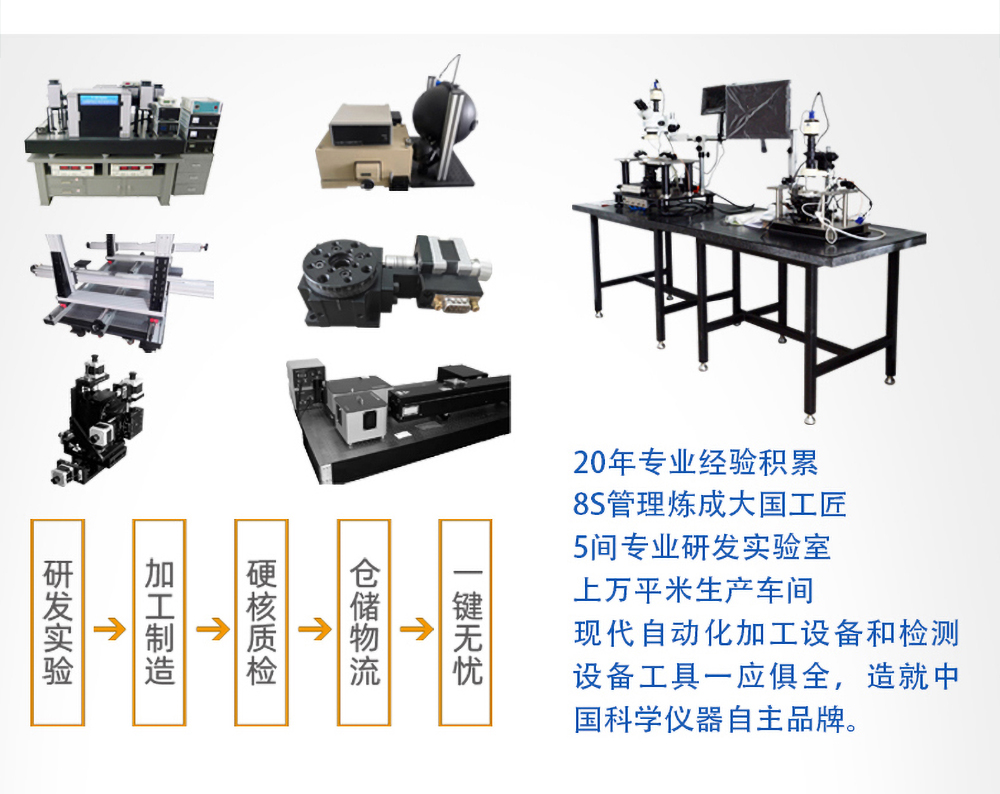
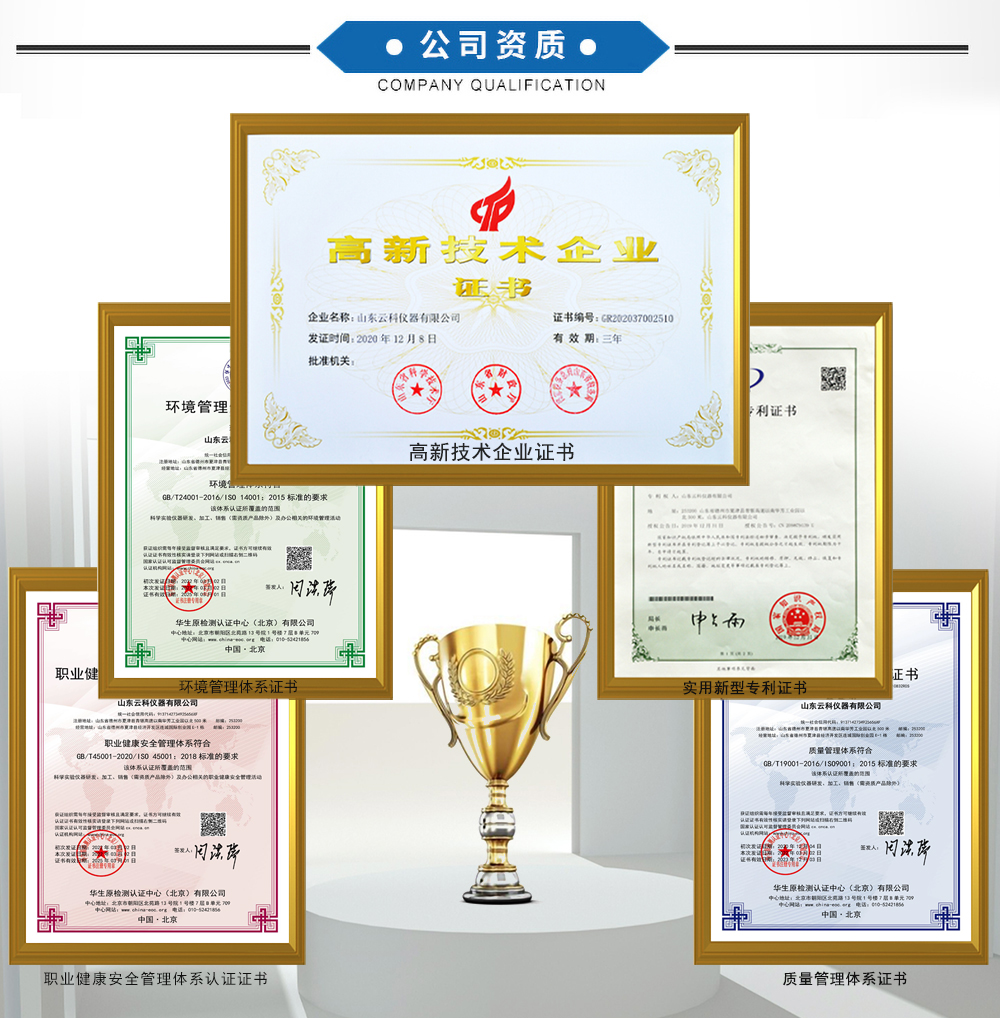

HGMML1 series variable diameter lens holder
HGMML1 series variable diameter lens holder
Product features:
Stainless steel independent adjustable rigid clamping rod clamping lens, stable, large load bearing;
Coarse fine tuning design can quickly load and unload lens and protect lens;
Novel and reliable locking device;
The v-shaped chuck at the front of the clamping rod can be rotated arbitrarily, and can hold lenses or cylinders of various thicknesses, with strong adaptability.
技术参数
| 型号 | HGMML1100 | HGMML180 | HGMML160 | HGMML1160 |
| 夹持直径 | 50~100mm | 30~80mm | 2~60mm | 50~160mm |
| 自重 | 0.4kg | 0.3kg | 0.24kg | 0.6kg |
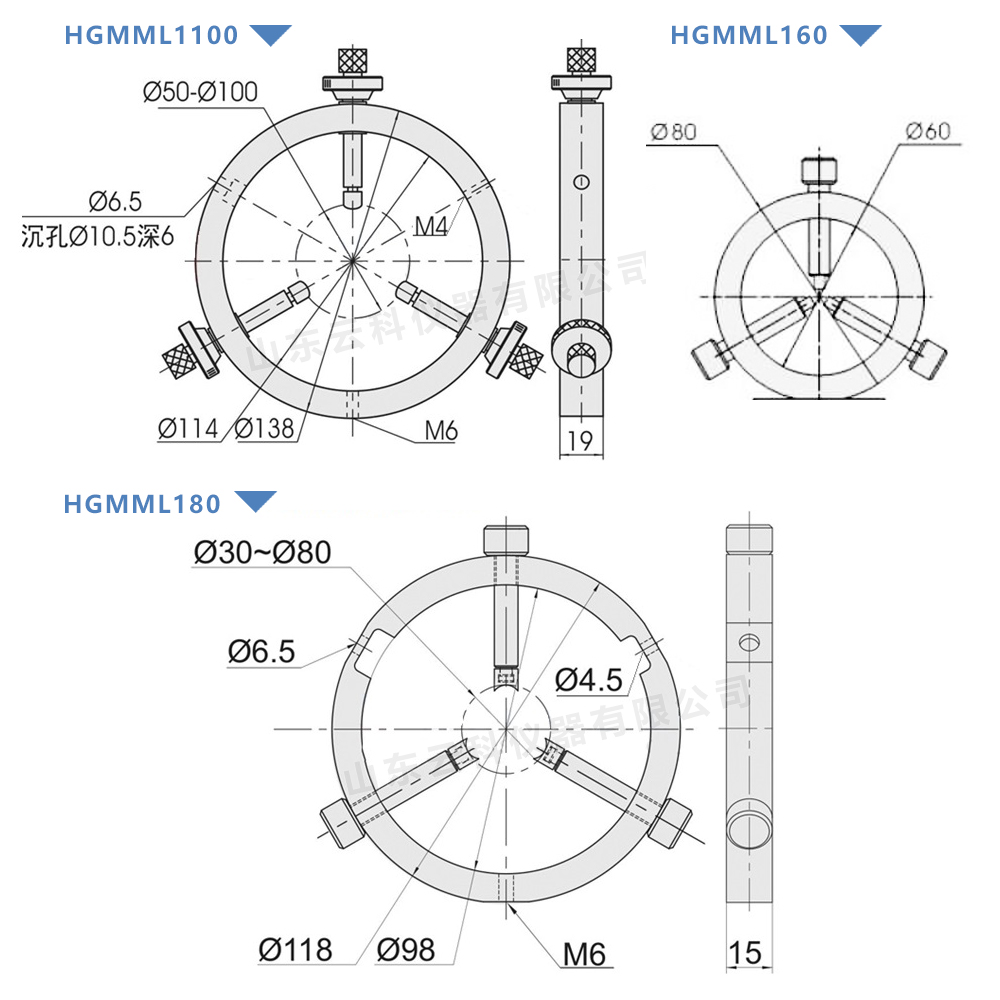
产品图片
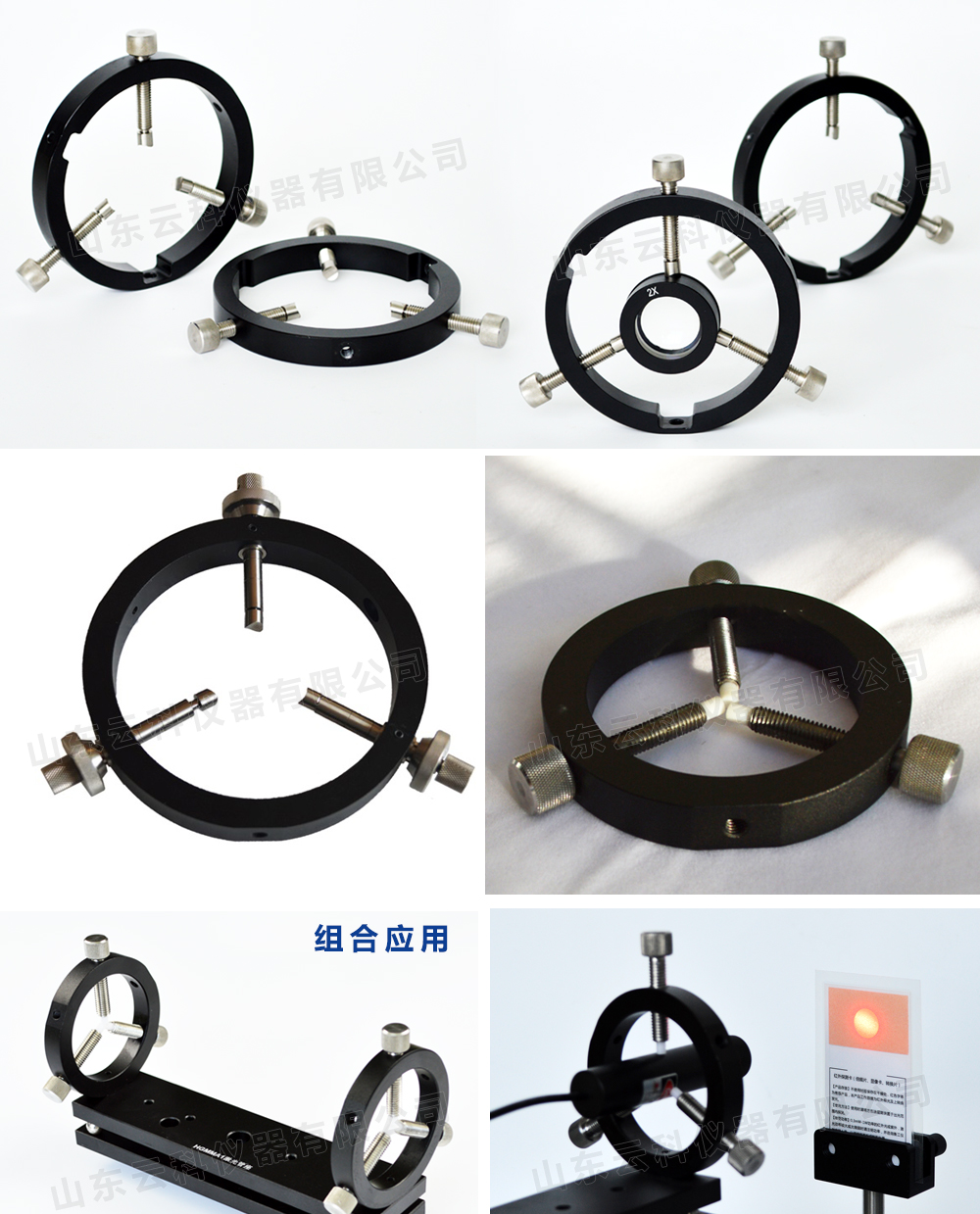
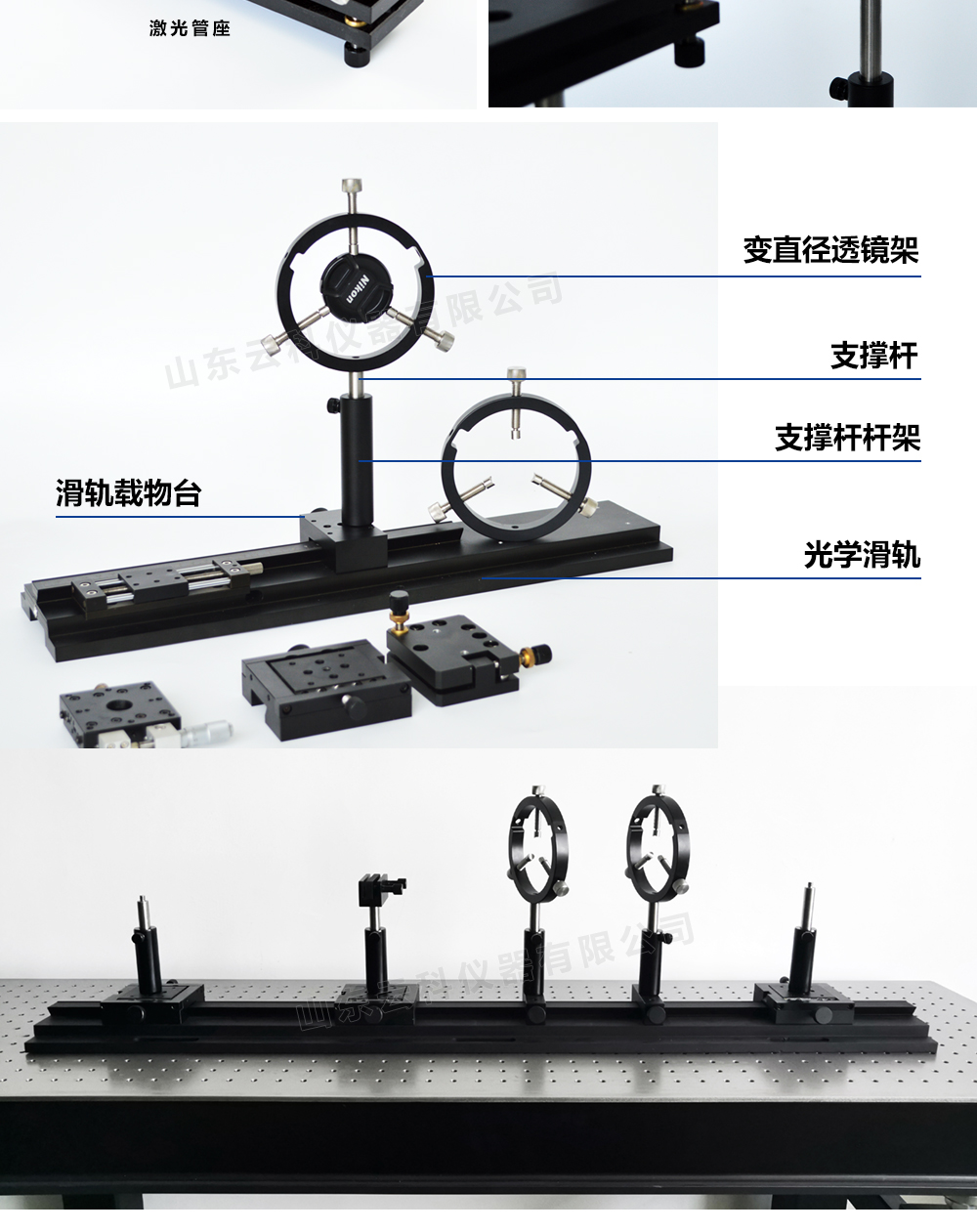
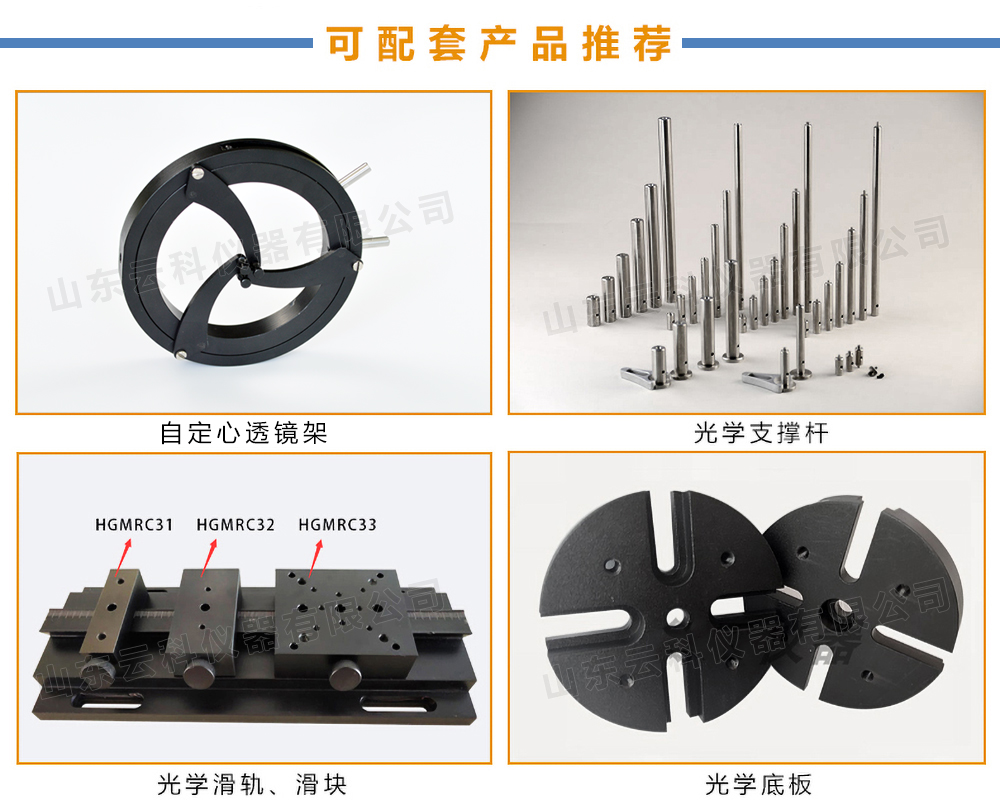
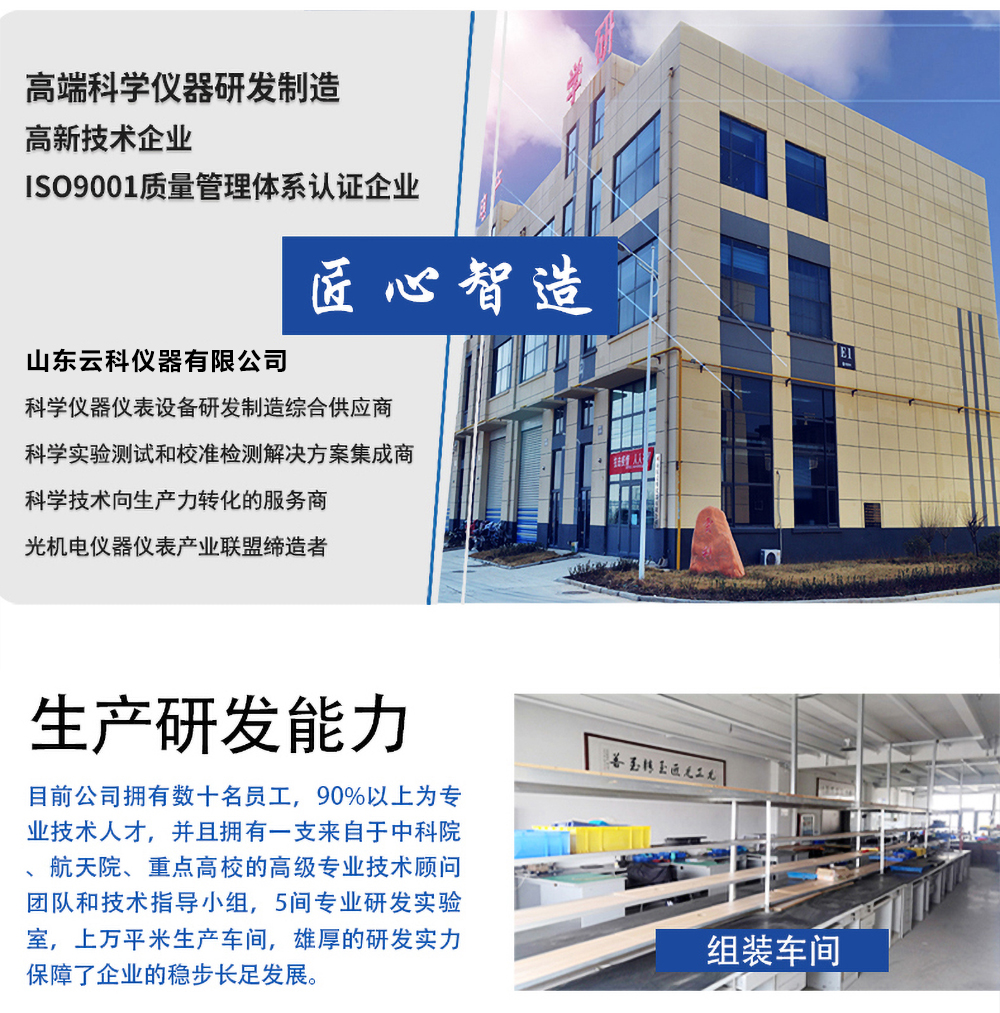
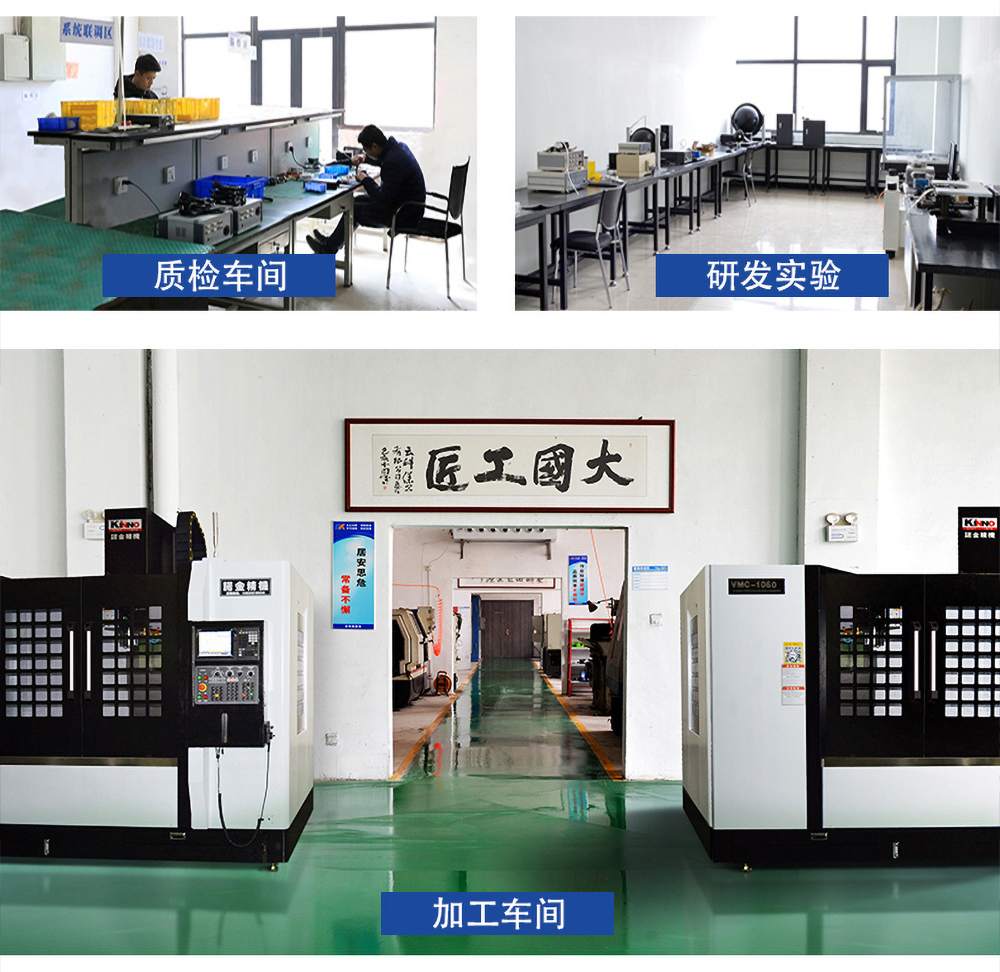
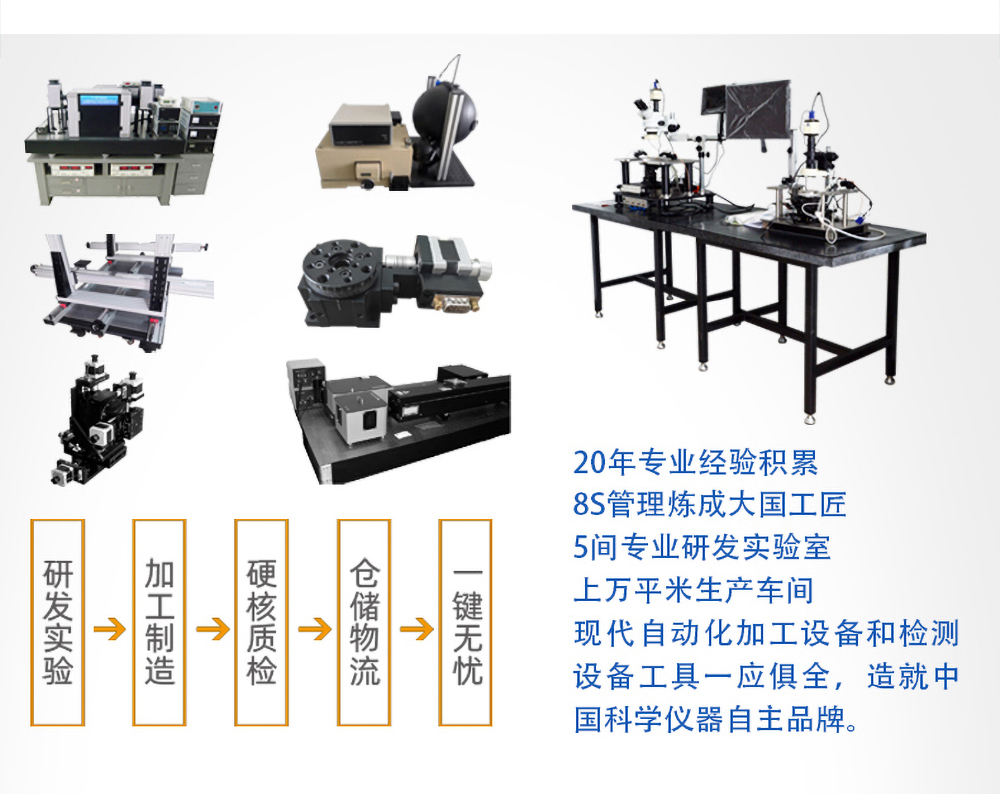
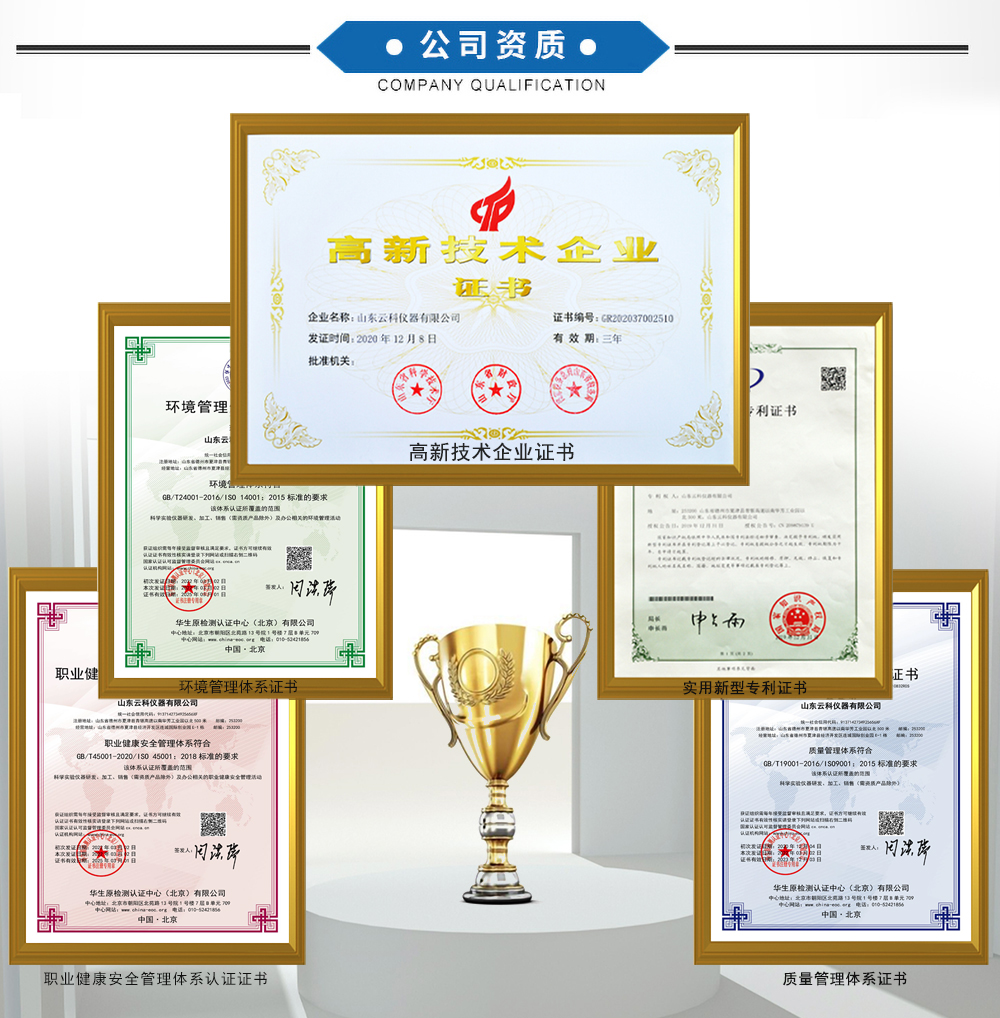
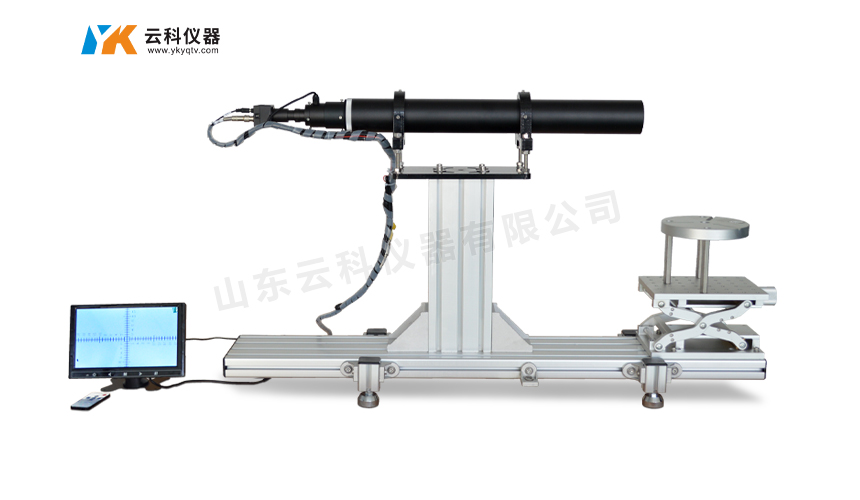
Pgf550-54 Photoelectric integrated parallel light tube
Pgf550-54 Photoelectric integrated parallel light tube
Technical parameters:
1, features: single pipe independent control system.
2, optical system: F550 parallel light tube, focal length 550, aperture 55mm (optical error 10 meters ± 0.3mm);
3. Control system: self-developed digital LED light source adjustment;
4, display system: independently developed high-power lens, HIGH-DEFINITION CCD video acquisition single screen display;
5. Debugging method: manual debugging;
6, input voltage: AC220V/50HZ, maximum power 100W;
7, the requirements of the environment: workshop clean and tidy, above 1000 workshop, the station area to do a good job of protection, prohibit non-staff walking to touch the light tube.
One, foreword
Abstract: Parallel light tube is the most basic calibration instrument. In order to facilitate the installation and calibration of optical and laser instruments, the basic principle and structure of parallel optical tubes are introduced. It is mainly composed of objective lens, differentiation plate, ground glass, light source and mirror tube. The partition plate determines the different uses of the parallel light tube.According to the requirements of production practice, the surface design of the parallel light tube can provide a limited distance in the indoor target. It can be used for calibration of instruments and measurement of characteristic constants of optical systems.
Introduction: According to the principle of geometric optics, objects that are infinitely near will be imaged on the focal plane after passing through the lens. Instead, light from the focal plane of the lens will pass through the lens as a parallel beam of light. If an object is placed on the focal plane of a lens, it will appear at an infinite distance.
Structure principle of parallel light tube: See Figure 1
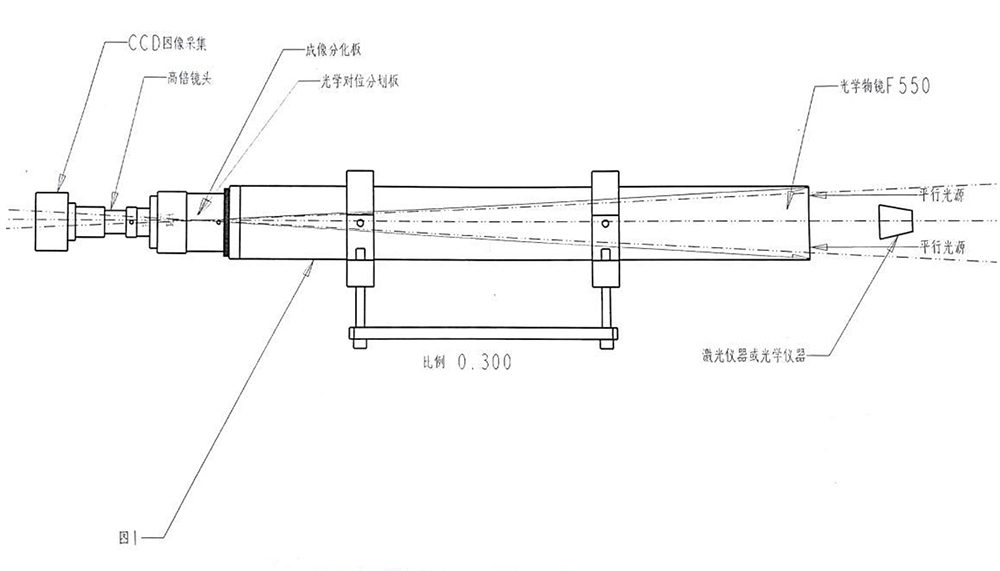
The structure principle diagram of the parallel light tube is composed of an objective lens and a demarcating plate placed on the focal level of the objective lens, a light source and ground glass arranged to make the demarcating plate evenly illuminated.
Since the splitter is located in the focal plane of the objective, when the light source illuminates the splitter, the light from each point on the splitter passes through the lens as a parallel beam of light. And because the partition board is engraved with a special cross scale value. These dividers with cross scale values will be imaged at infinity. In this way, to the observer, the splitter creates a target at a finite distance and at an infinite distance.
Conclusion: Parallel light tube is a basic optical tool used in the calibration process. It is very important to understand the basic principle and use of parallel light tube for the installation and calibration of optical instruments. Note: As a result of the parallel light tube as an optical detection instrument. And because the optical system of the parallel light tube is complex, the debugging is tedious, the steps are many, the variety is many. Therefore, it is necessary to choose products with different technical parameters and accuracy requirements according to different uses. At the same time, it is necessary to weigh weight, cost and other factors. It is necessary not to blindly pursue long focal length, large field of view, large caliber and high precision. Because of the price and technical parameters of the parallel light tube, the accuracy grade basically increases as an indicator. For example, the price of parallel optical tubes with the same focal length of 550MM will increase 4-5 times when the diameter is increased from 55MM to 100MM. A parallel optical tube with a focal length of 550MM, when the focal length is increased to 2M, the price will increase 1-2 orders of magnitude!
Two, photoelectric integrated parallel light tube structure
Basic structure of photoelectric integrated parallel light tube FIG. 2:
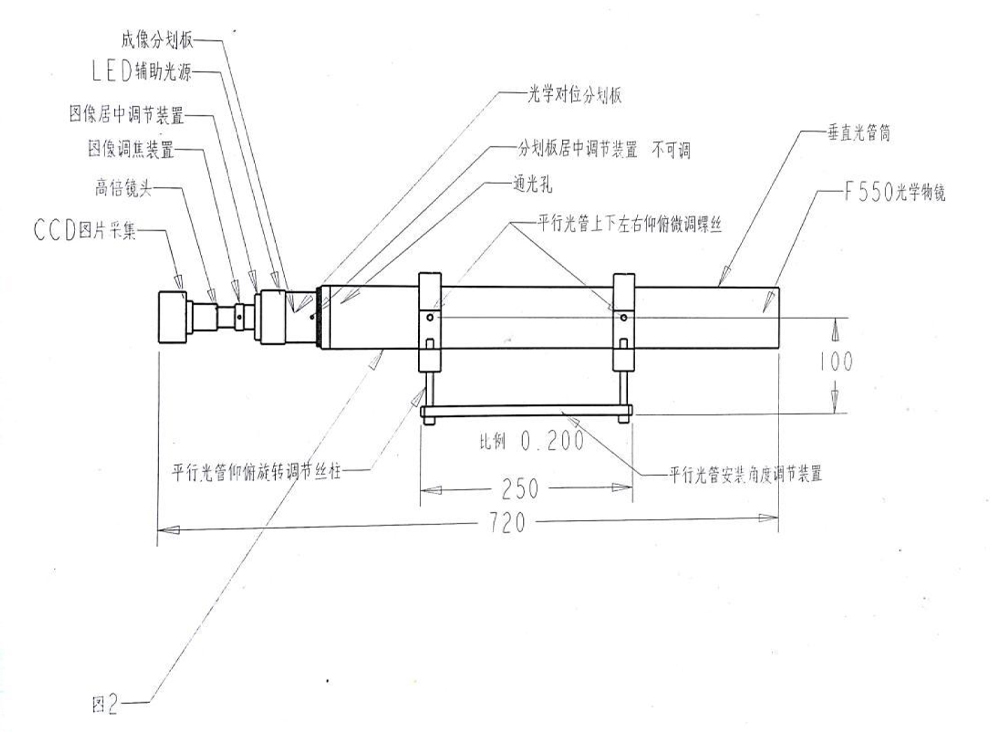
Since the splitter plate of the parallel light tube is completely in the focal plane of the objective lens and produces a parallel light beam, conversely, when a parallel light beam that is parallel to the objective lens hits the parallel light tube, it will be displayed in the cross center of the splitter plate of the infinite distance of the parallel light tube. Conversely, if the light not parallel to the objective hits the parallel light tube, it will not appear in the cross center of the splitter.
Using this characteristic of parallel light tube, we can use high power lens, HIGH definition CCD, video capture card. Record and display the characteristics of the light source on the partition board. It is convenient for us to adjust the parallelism, perpendicularity and straightness of the laser instrument.
The differentiation board of the parallel light tube: the differentiation board of the photoelectric integrated parallel light tube is composed of two concentric and coaxial, two differentiation boards with different scale values. One is the differentiation plate used for correction, the scale value is small, the actual scale value is 0.05mm per grid, in the parallel light tube represents the Angle value of about 20 arcseconds (theodolite measured). One is to display the differentiation plate, the scale value is larger, the actual scale value is 0.1mm per grid, in the parallel light tube represents the Angle value of 40 arc seconds or so (theodolite measured).
Conversion of scale value of differentiation board of parallel light tube:
According to the principles of optical geometry, right triangle functions. As shown in figure 3;
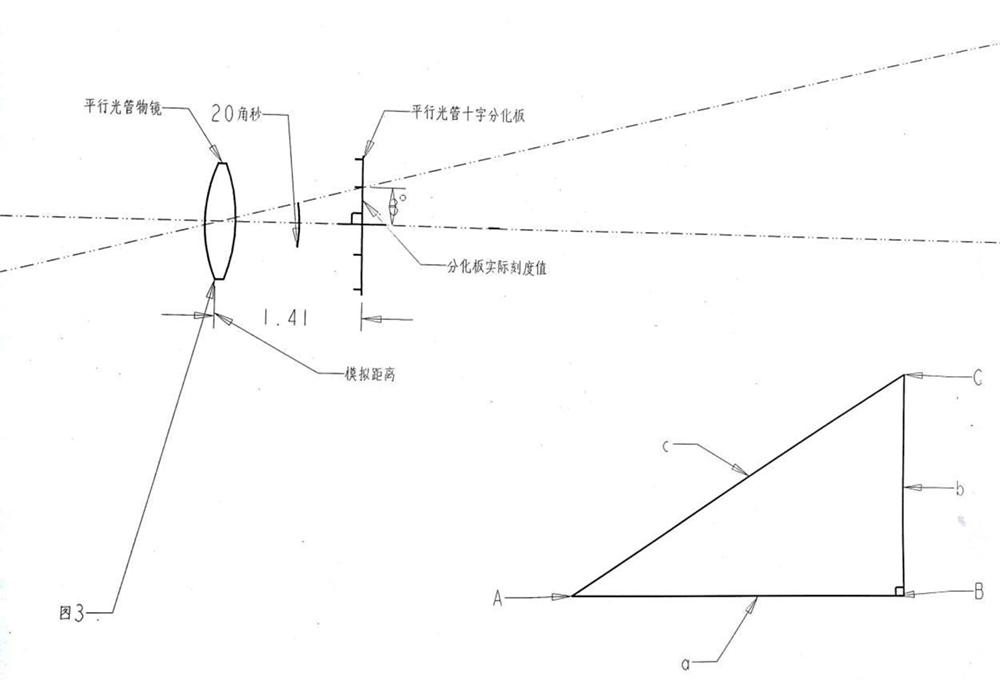
校正刻度值换算:已知刻度值张角是 20 角秒(经纬仪测得)
我们设定张角 A=20 秒=0.0056 度
我们设定模拟距离 a=10 米=10000MM
分化板刻度值是 b
引用公式:
b=a*tanA
b=10000*tan0.0056
b=0.9744MM
所以:校正刻度值每格在 10 米处为 0.9744MM.
显示刻度值换算:已知刻度值张角是 40 角秒(经纬仪测得)
我们设定张角 A=秒=0.011 度
我们设定模拟距离 a=10 米=10000MM
分化板刻度值是 b
引用公式:
b=a*tanA
b=10000*tan0.011
b=1.914MM
所以:显示刻度值每格在 10 米处为 1.914MM.
包装和运输:
1,包装:木托或木箱
2,设备尺寸和重量:
净尺寸:长 1000MM*宽 200MM*高 370MM.
包装尺寸:长 1050MM*宽 250MM*高 430MM。
设备净重:30 公斤。
包装重量:35 公斤。
3,运输:普通陆运。
设备清单:
1,单管维修校正台主机 1 套(含支架)
2,控制主机(单路光源控制) 1 台
3,显示器(9 寸显示器,多功能支架) 1 副
4,F550 光电一体平行光管。 1 支
5,调试工具一套。 1 套
6,平行管原理说明书 1 份
产品图片
